Success Continues for Resolven Bowlers
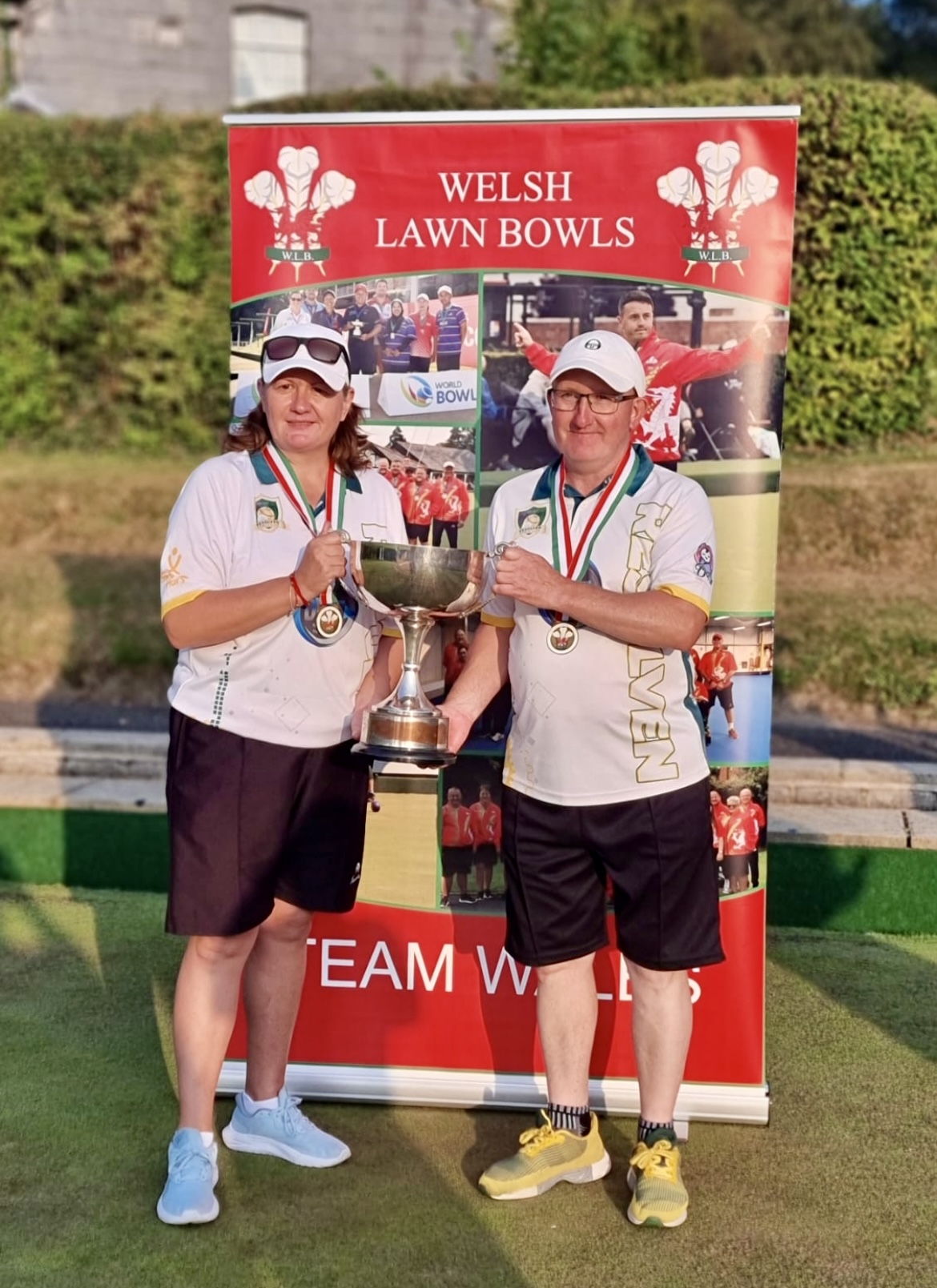
Congratulations to Ceri Holmes and Stephen Allen on winning the Welsh National Bowls Championships Mixed Pairs at Llandrindod Wells.
~ ~ ~

Congratulations to Ceri Holmes and Stephen Allen on winning the Welsh National Bowls Championships Mixed Pairs at Llandrindod Wells.
~ ~ ~
This year Resolven Bowls Club (RBC) celebrated 93 years since the formation of the Club and the Pavilion which was opened as a Community Hall for the first time in 1932. The original Pavilion was a striking green wooden building with a front porch which saw great service for many years.
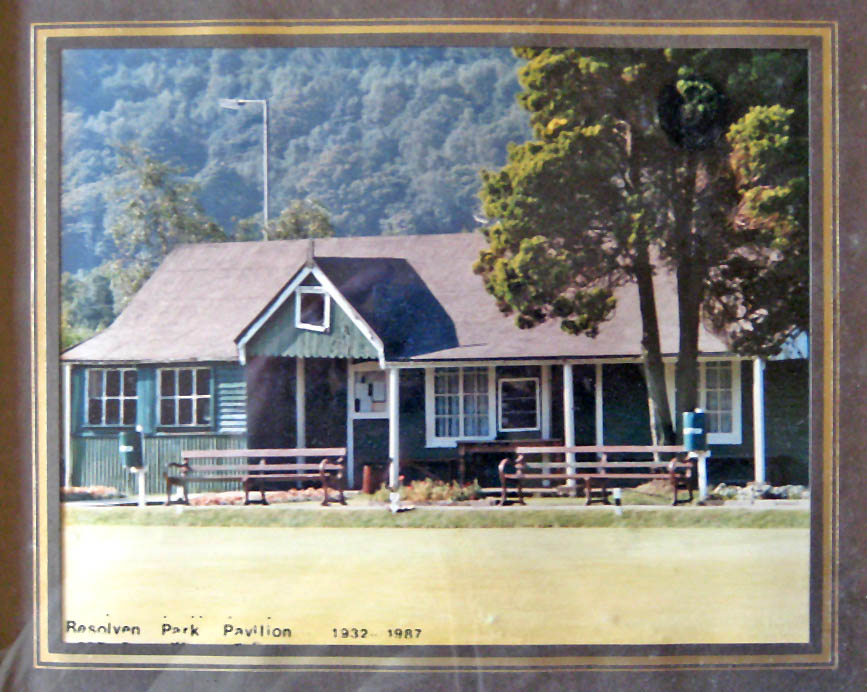
Due to its age and as the old Pavilion was being used extensively the Resolven Community Council replaced it in 1987 with a new brick building – which included a kitchen, a large meeting room, separate changing rooms and external toilets.
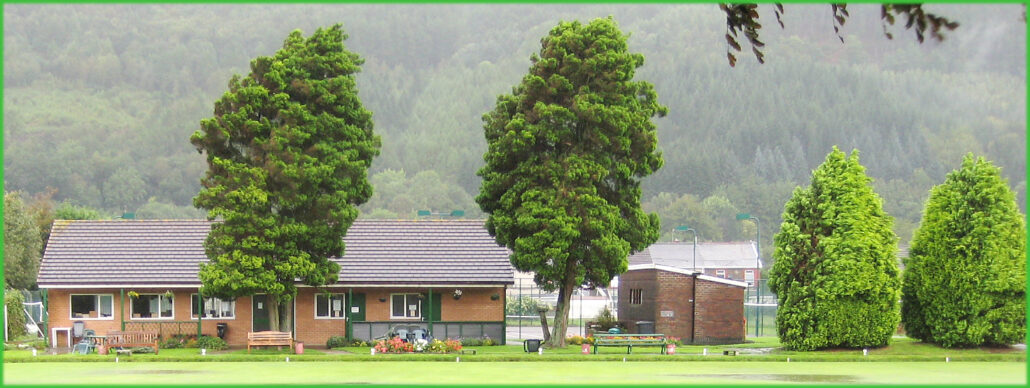
The RBC celebrations were held on Sunday, 3 August with rain clouds in the morning, but the afternoon turned out to be fine and warm, changing the surface of the green which provided a challenge for the bowlers. There was some very good, skilfully clever bowling to appreciate and admire from many International bowlers from all over Wales.

The whole event was organised very efficiently and confidently by Andrew Hopkins supported by Simon Ace (who had been trained well by the original Convenor, Mike Herbert advising from South Africa) and they were helped by very many local Volunteers. It proved a complex system to organise with over 70 entries, almost half either current or past International bowlers, but the system worked very smoothly and successfully throughout the day.
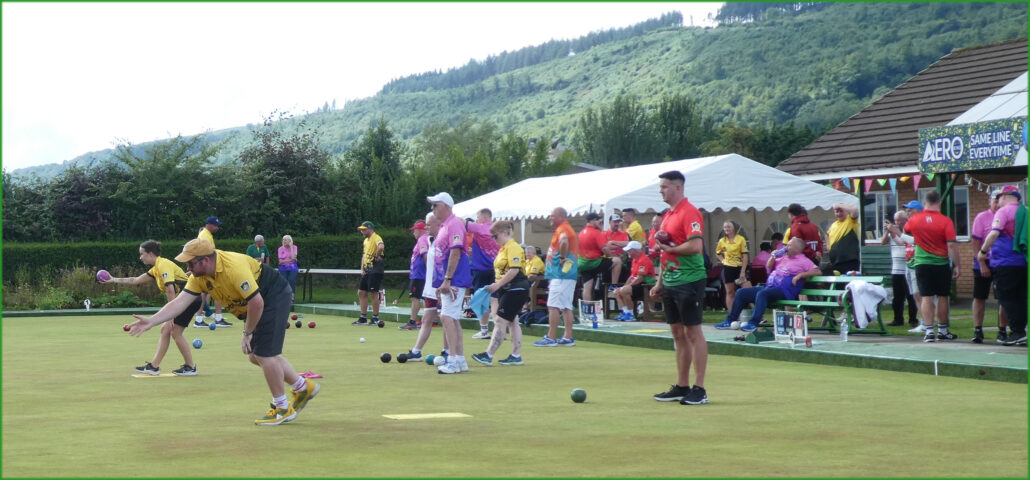
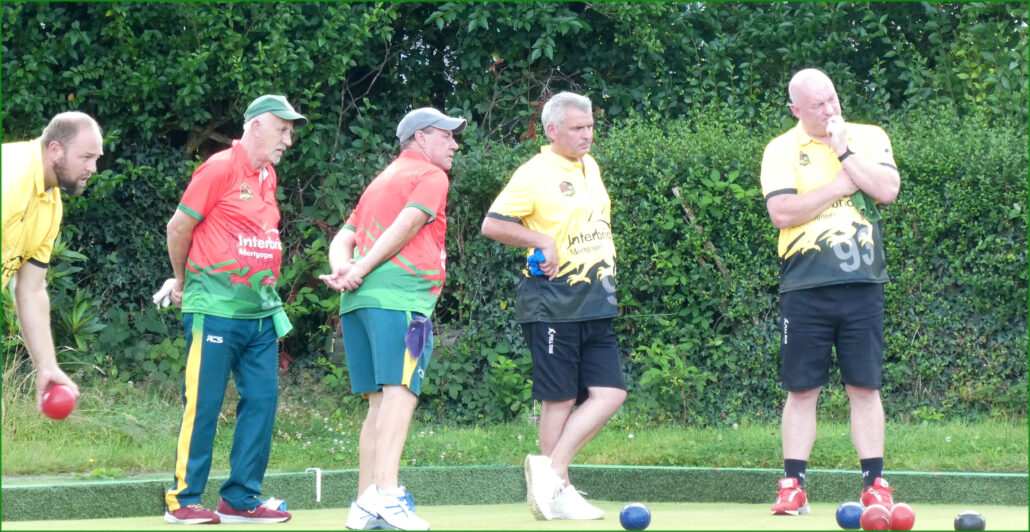
The day attracted many spectators and their families, and refreshments were readily available for all present. The Resolven Green has become well known for being “one of the best” not only in the area but in Wales. All credit to the Community Council Groundsman and all bowling helpers who give of their time freely to ensure that the Green and surrounding area is as good as it could and should be.
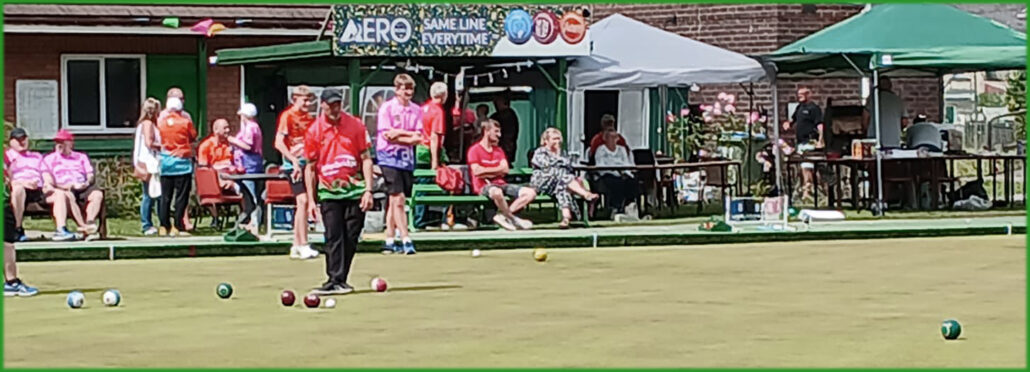
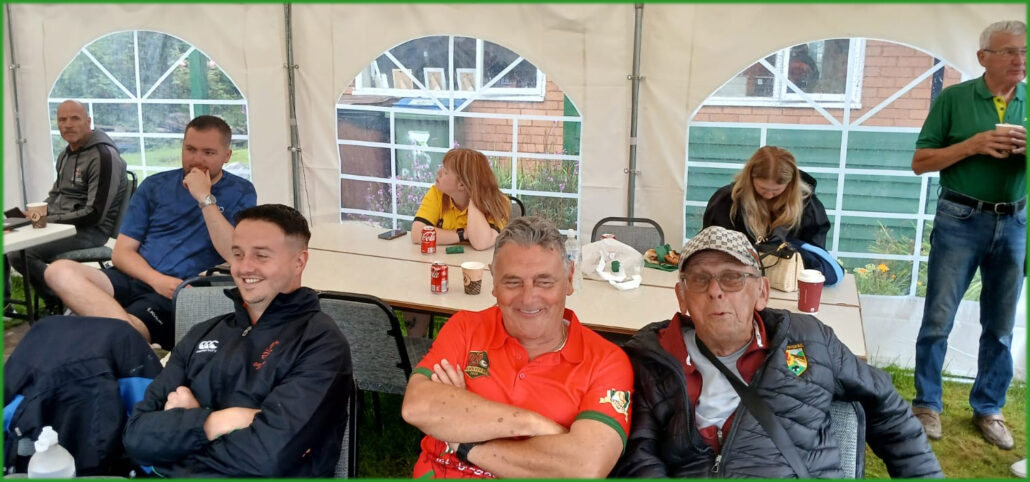
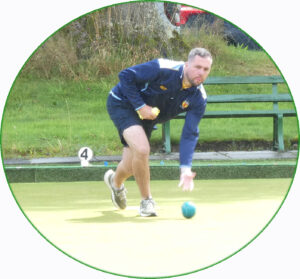
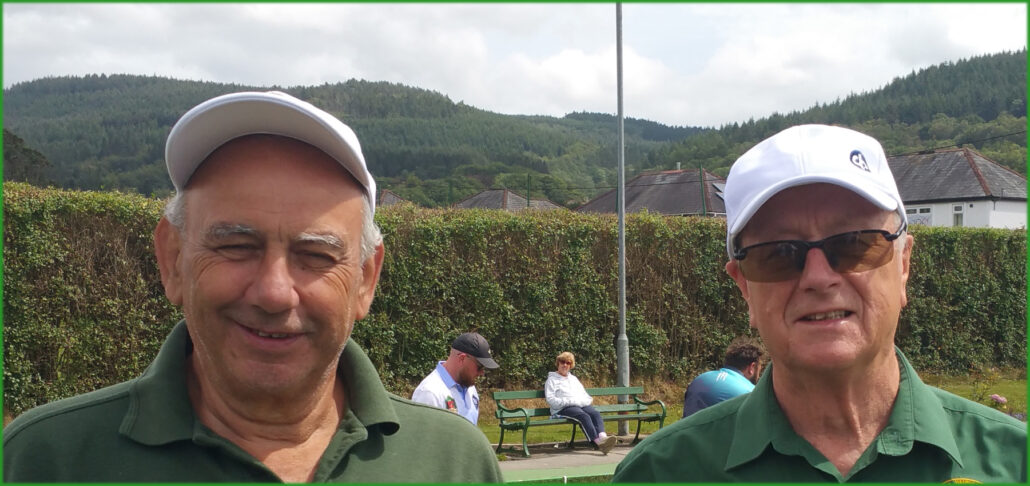
Losing Semi-finalists were the Resolven triple of Shaun (Ned) Kelly, Regan Ace and Stephen Allen who lost out narrowly to the eventual winners John Roberts, Mike Jackson and Resolven’s own Nigel James, on an extra end, whilst Jake Hancock, Jordan Driscoll and Jamie Harries beat defending Champions skipped by Ross Owen. but then lost to Carl Wood’s triples. The Finals were held late afternoon and the bowling was thrilling to watch, especially as there was a team from Resolven Bowls Club in the Semi Finals.
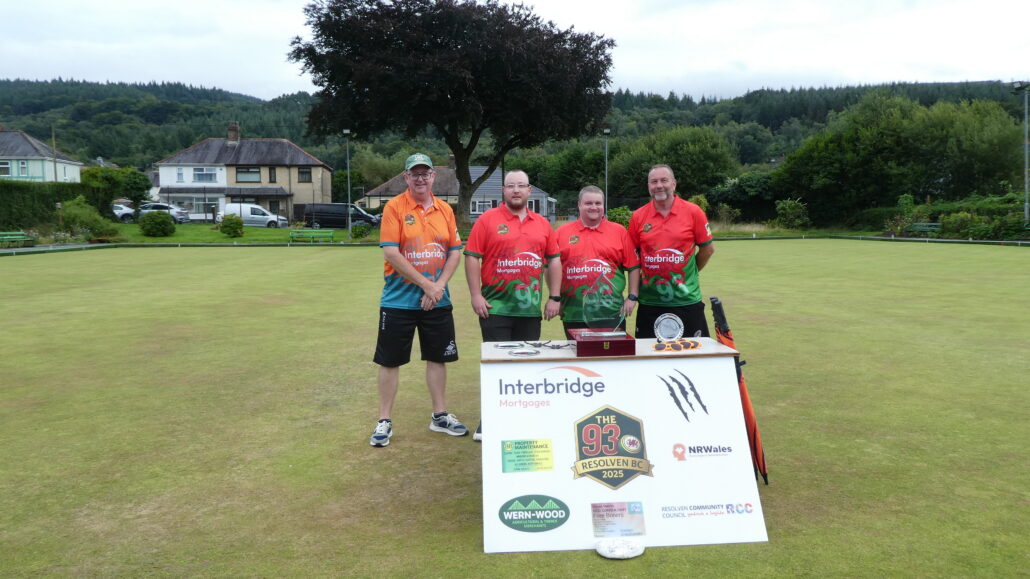
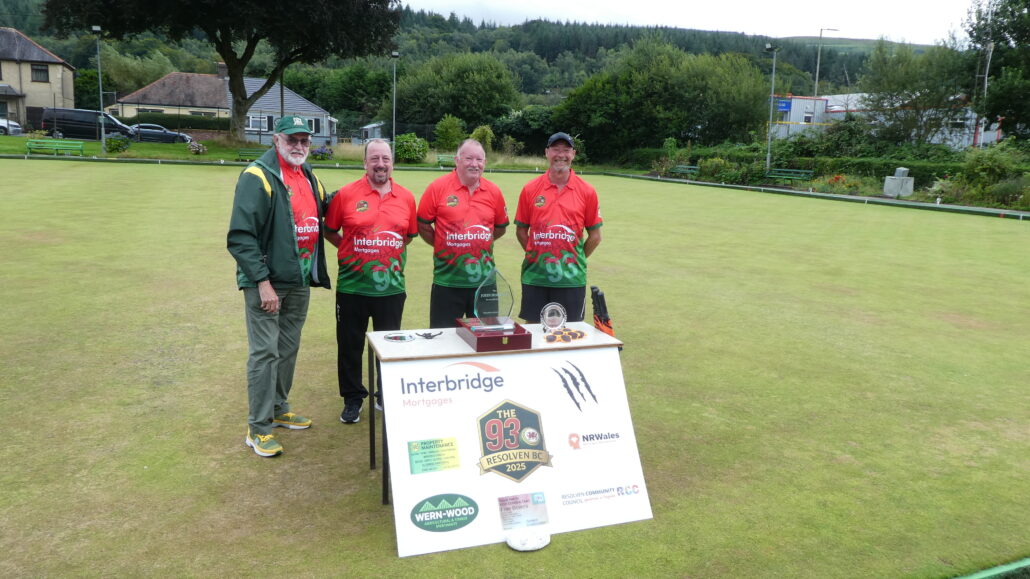
The Semi-finalists, Finalists and Winners presentations were done by Resolven’s BC Chair, Andrew Hopkins, Secretary, Simon Ace and President, Hugh Lewis.
The ‘Plate’ final saw Gareth Lewis, Ian Henderson and Marc Wyatt winning against the regular Pontrhydyfen triple in this event Chris Jones, Barrie Evans and Ben Thomas.
Another successful event that the Resolven Bowls Club can be proud of and a bright future looks promising for the sport of Bowls in the village of Resolven.
~ ~
Photographs by Lionel Stock and Hugh Lewis
~ ~ ~ ~
On Sunday 10th of August 2025 on a glorious, sunny afternoon Resolven bowling green came alive with Cowboys and Indians and was transformed into a Country & Western scene with the outdoor marquee renamed the Saloon, along with the sounds of honky-tonk country music playing in the background.
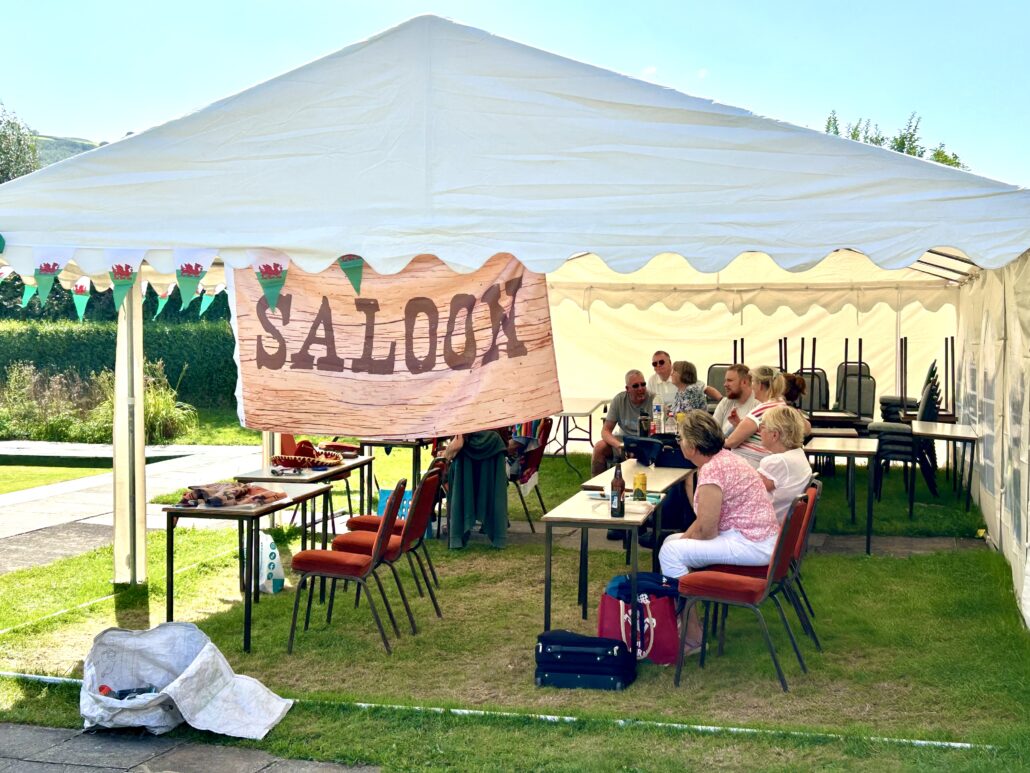
The event was organised, for the second year, by ‘CHANGE STEP’, a support charity for military veterans in Wales in conjunction with Resolven Bowls Club and Resolven CC. The day was filled with laughter, good sportsmanship and fun bowling which was a great social get together for the Veterans and the Resolven bowlers.
The organisation :-
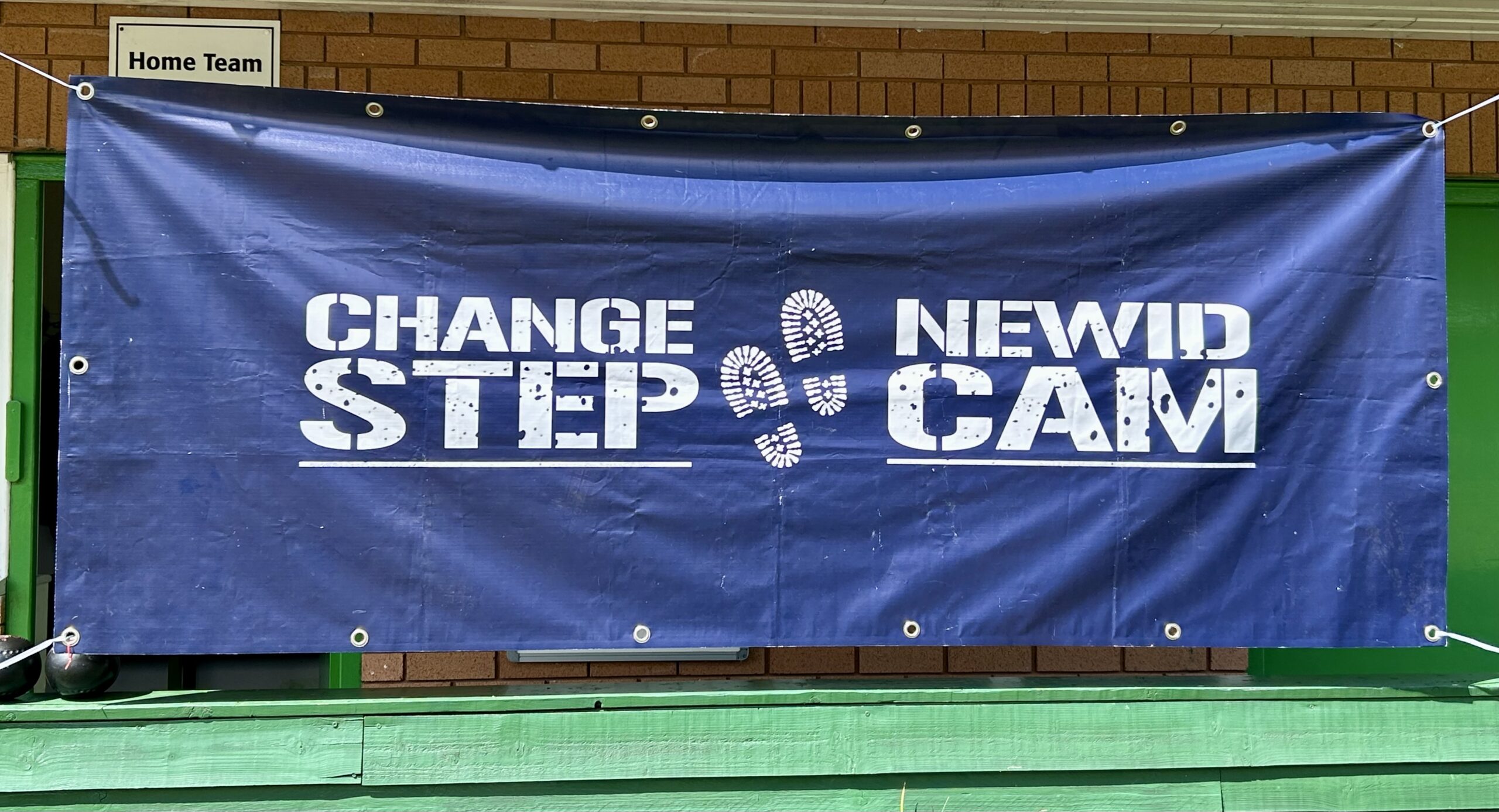


The Event:-
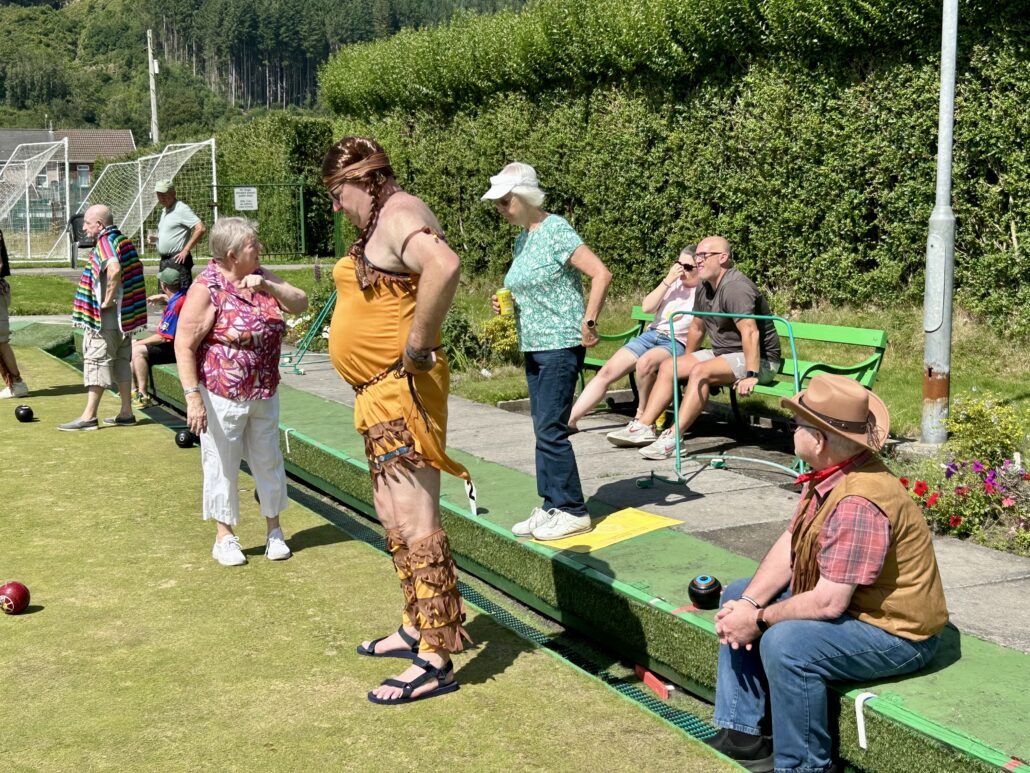
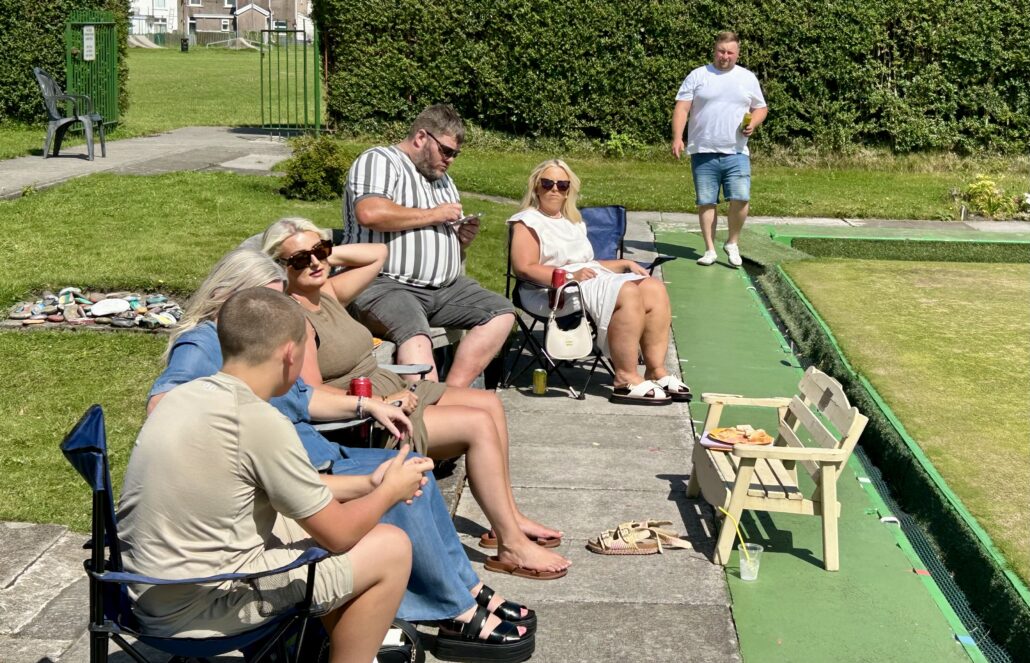
There was a good atmosphere both for the bowlers on the green but also for all of the spectators watching.
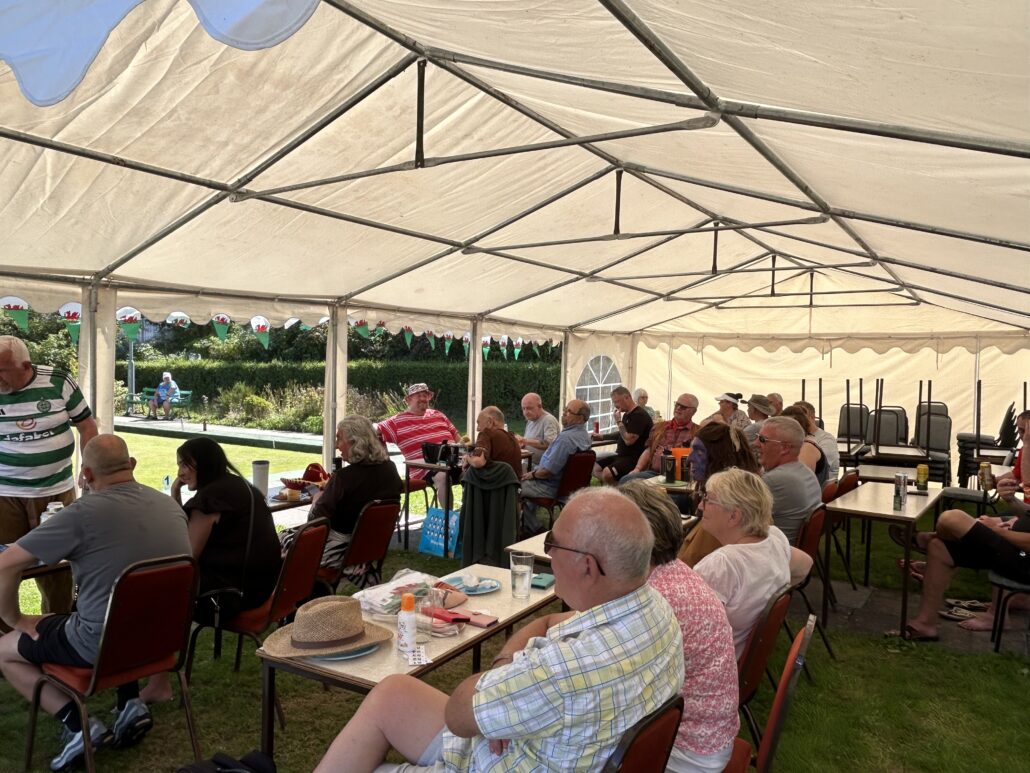
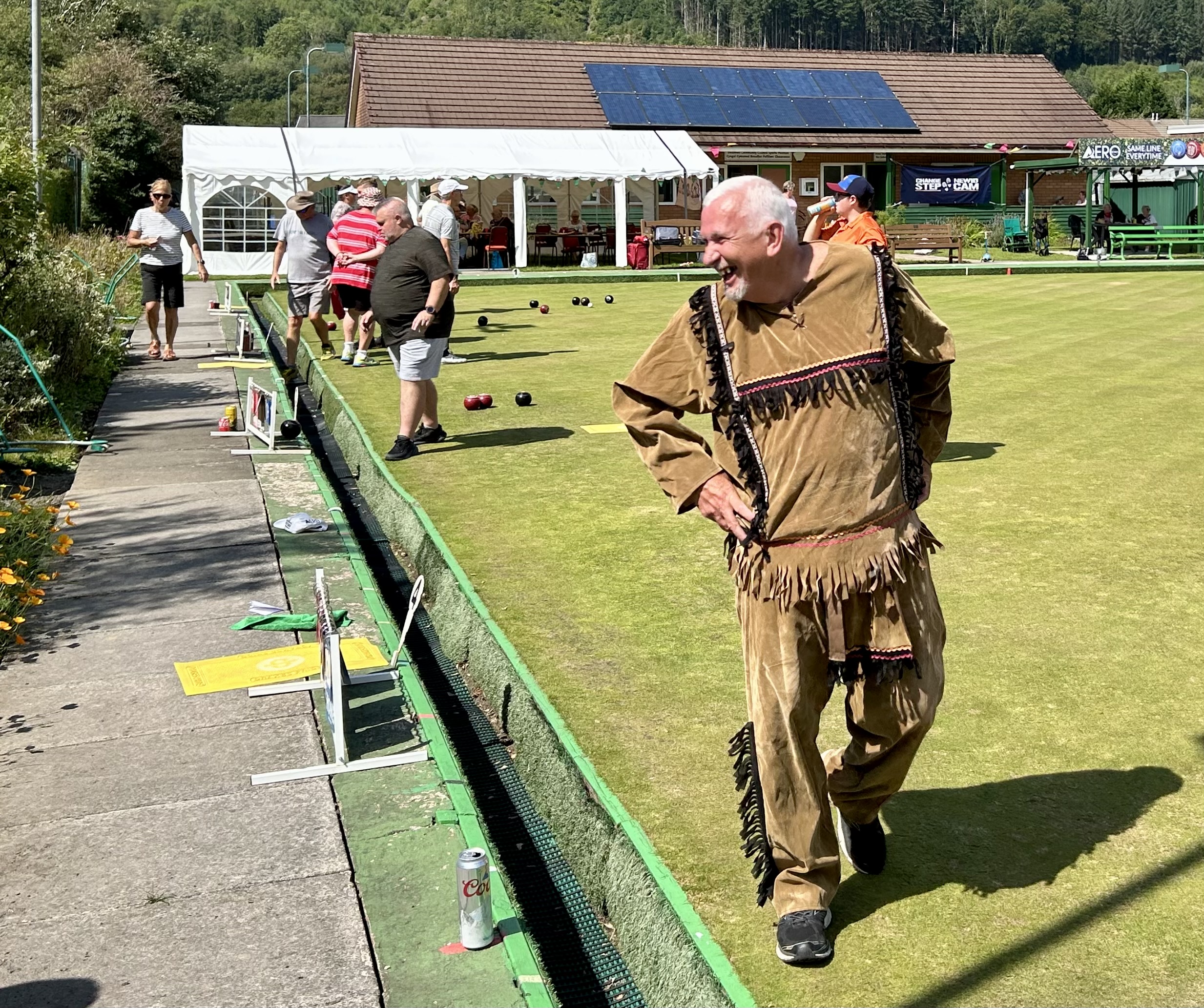
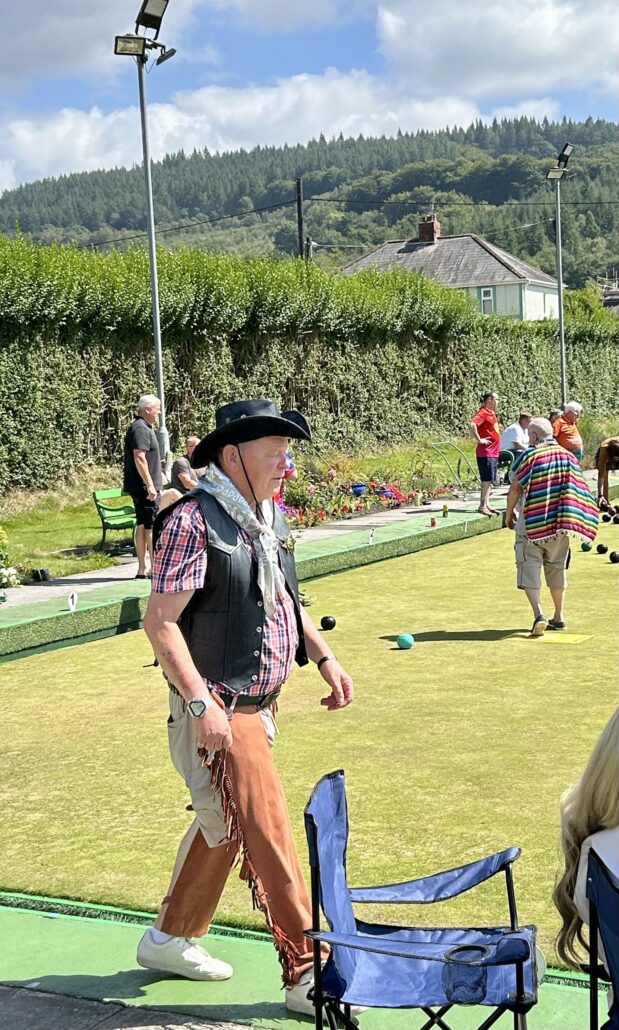
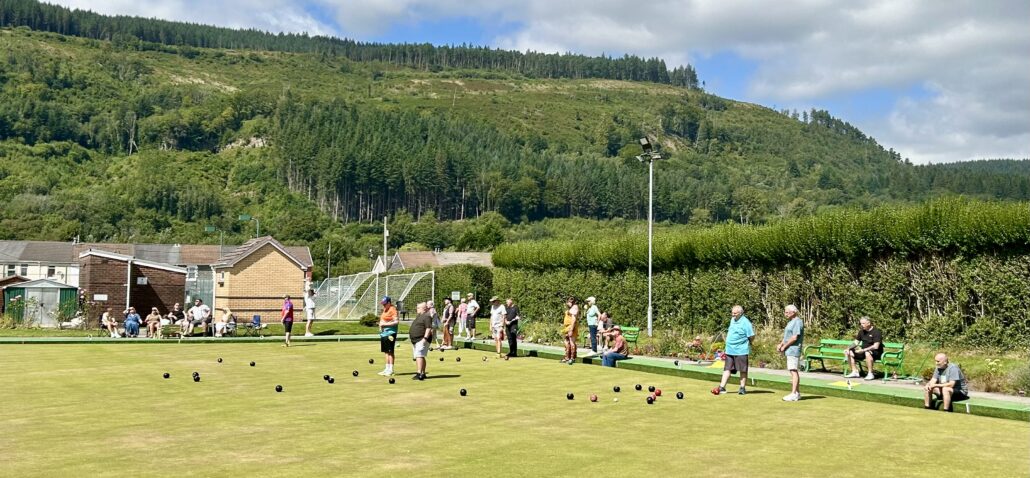


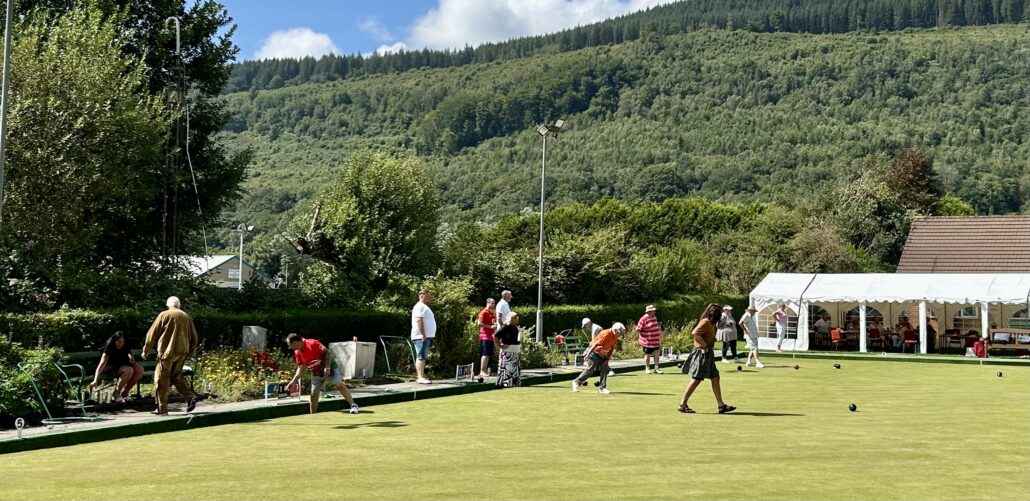

After the bowling, refreshments provided by the Veterans and RBC were enjoyed and a raffle was drawn with all proceeds and donations going to the Charity (No. 1039386)
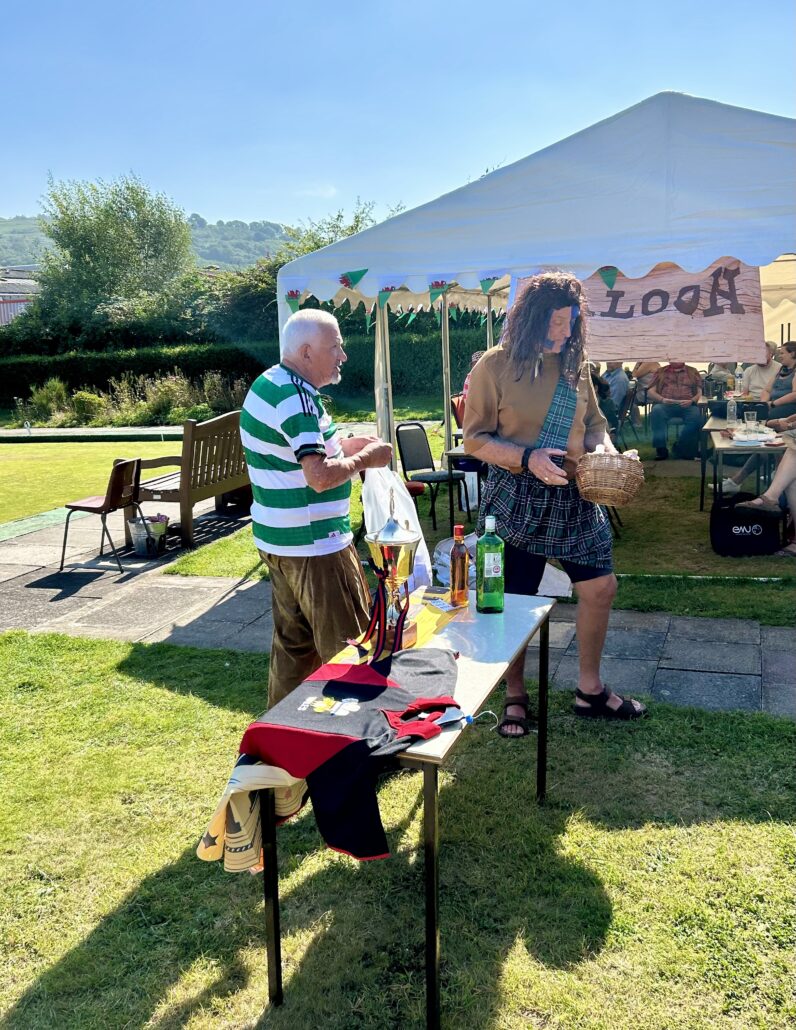
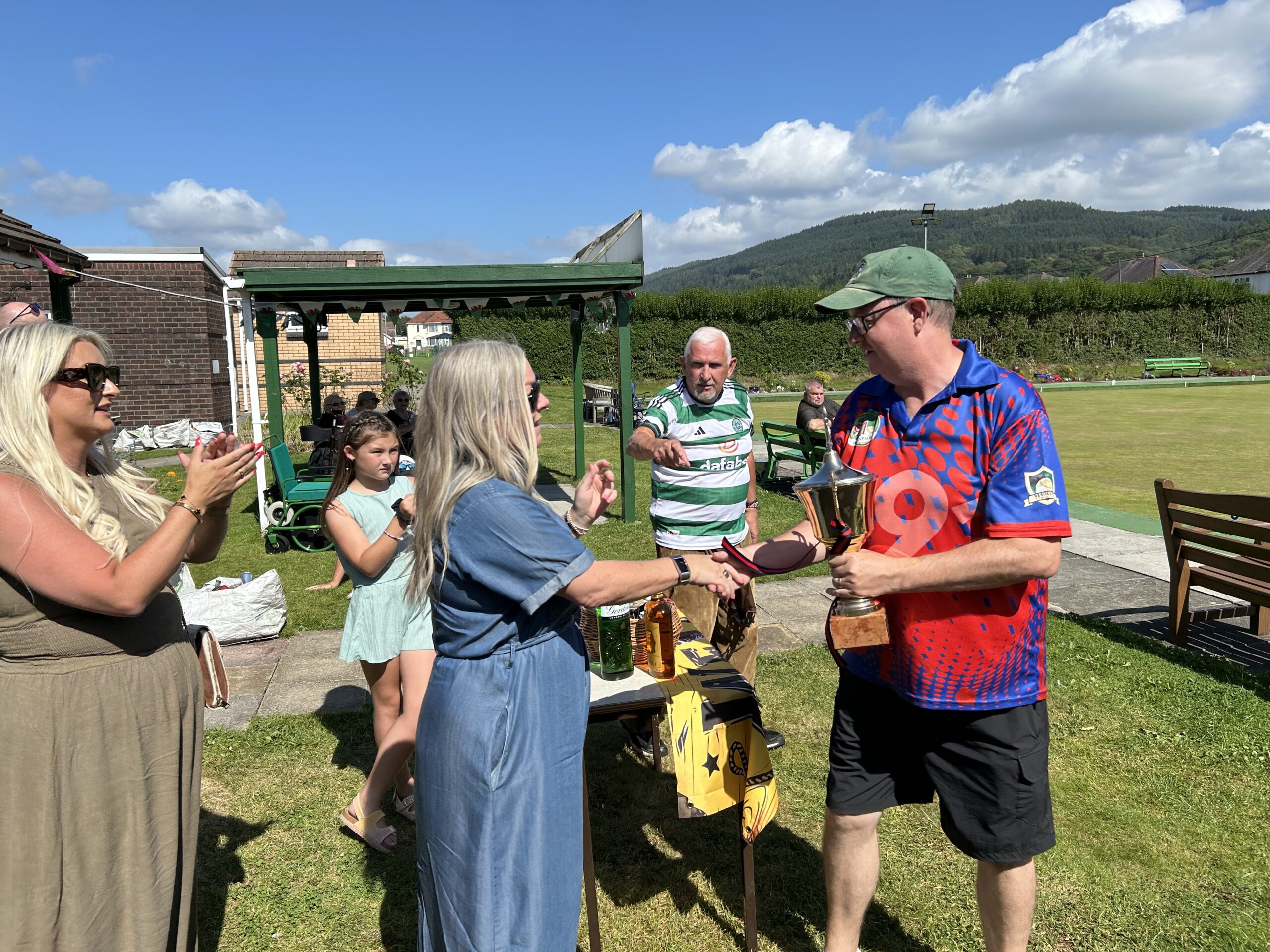
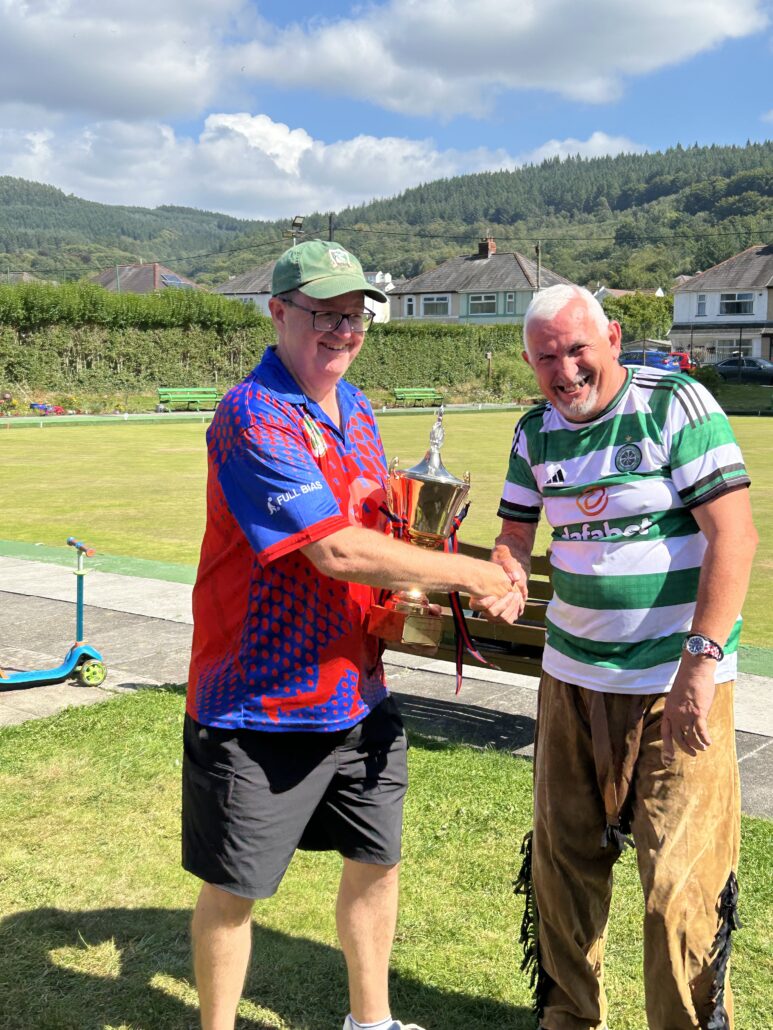
Simon Ace said it was a great privilege and pleasure to host the match again this year. Mike a Resolven resident, spoke on behalf of the Veterans and expressed his thanks to everyone at Resolven for their welcome and for making the event such an enjoyable experience.
On the day with the raffle and donations the sum of £170 was raised. All the proceeds go to ‘Change Step’ and help towards the funds for a trip to Normandy which they are planning for 2026.
~ ~ ~
“I have recently found a box in which was a photo on a newspaper clipping which contained information on the drowning of a Private Newbury during a bathing drill. It states that they lived in Yeo Street Resolven. There is not much information on there and the clipping. Is not in good condition. I think his Christian name could have been Gormer? My maiden name was Newbury and I was born and bred in Resolven. I am interested in finding out more about this if anyone can remember anything?”
Please reply directly to Louise by e-mailing her on marie.louise.gregory@icloud.com
~ ~ ~

On Monday 28 July Resolven Bowls Club with the cooperation of the Resolven Community Council were hosts to the Welsh Lawn Bowls President’s side against the Welsh Under 25’s Academy, so the ages of the 48 bowlers on the green ranged from 10 to 80+ showing that there is no age barrier in the sport of bowls.

The names of the Welsh Under 25 Academy squad are shown below.
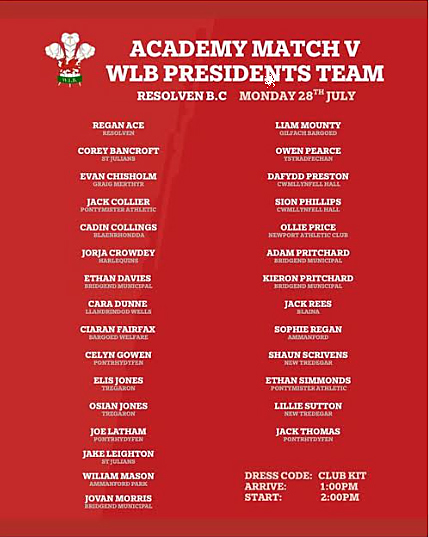
The President of Welsh Lawn Bowls, Heulwen Morgan chose her side from various clubs throughout Wales, including Resolven BC and every bowler wore their own Club kit on the day. The Resolven bowlers were Lyn Johnson, Christine Twaite, Margaret Philips, Tony Philips, David James, Hugh Day, Janice Day, Aeron Humphries, Nigel Davies and Freda Skerry.
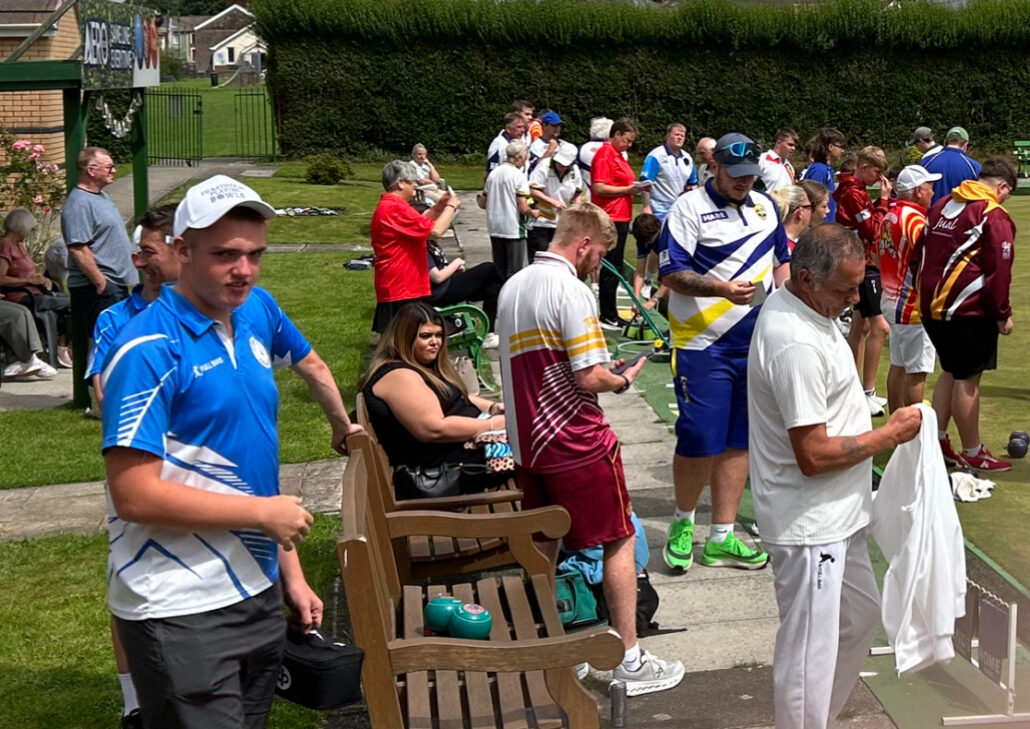

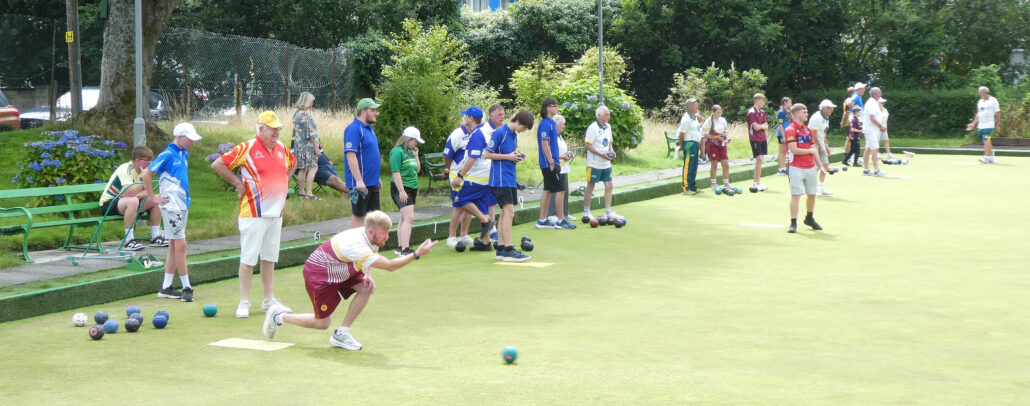

Over the six rinks the score was very close throughout the match but the Under 25’s Welsh squad managed to pip the Welsh President’s rink teams by a few shots.
The weather was kind and the whole event was a great success, after which refreshments were enjoyed by all.
~
The previous day the West Glamorgan County Bowling Association Under 18’s were at Resolven.

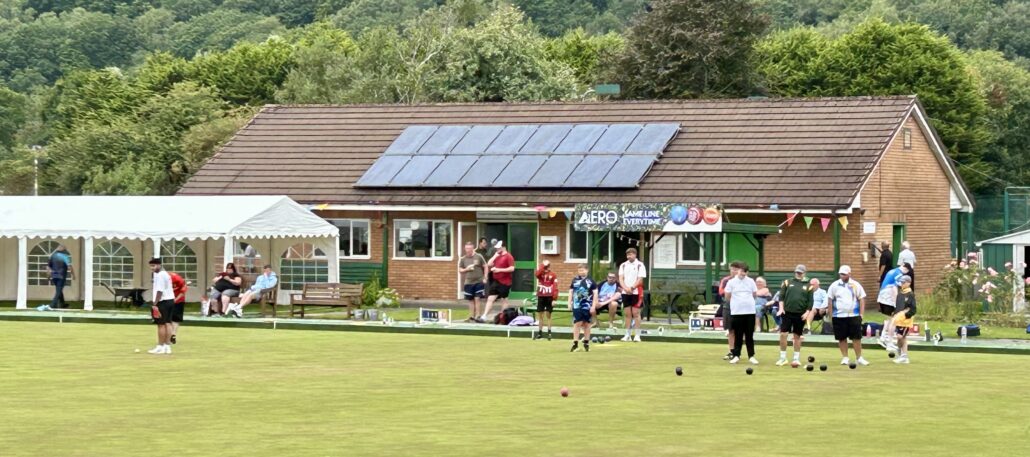

~
The condition of Resolven green and surrounding area is the envy of many Bowls Clubs and is such by the hard work of many volunteers throughout the year working with the Resolven Community Council Groundsman.
~
Resolven Bowls Club (RBC) was officially started in 1932 and as previously reported on this website, the Club has celebrated this by holding an annual Invitation Tournament, which this year, 2025 is titled ‘The 93’.
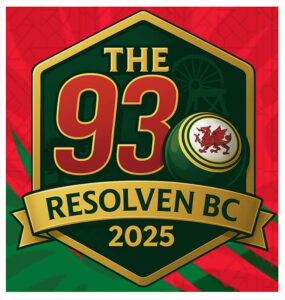
Again Resolven welcomes more International bowlers this weekend. We understand that nearly half of the players in the tournament have represented Wales at Junior or Senior International level with British and Commonwealth Champions. The players draw has been done but anyone can enjoy World class bowling and be a spectator.
‘The 93’ takes place at Resolven Bowling Green on Sunday, 3 August, from 9.00a.m. through to the evening.
~ ~ ~ ~

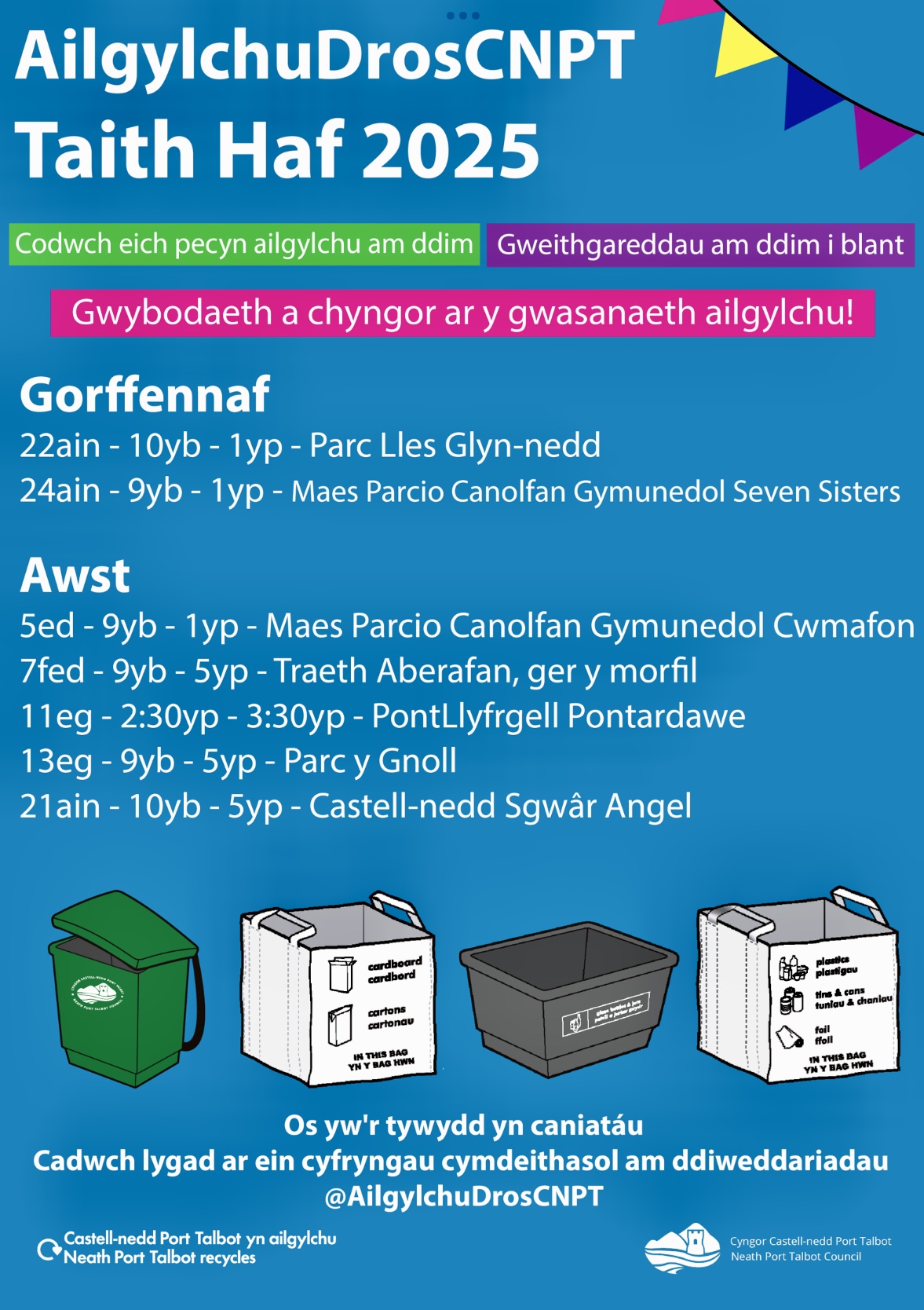
~ ~ ~ ~

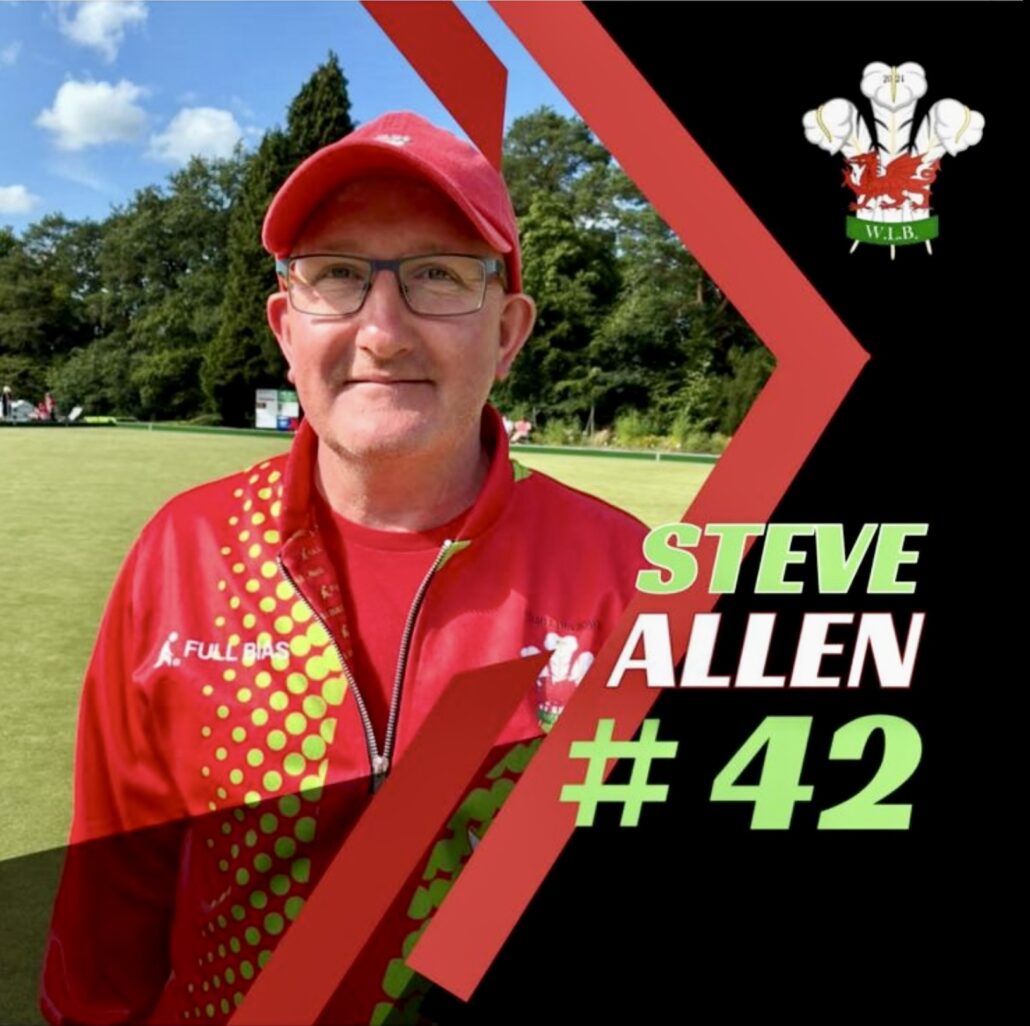
The name change of the Governing body of bowls in Wales to ‘Welsh Lawn Bowls’ was only a couple of years ago so the number of new ‘Caps’ since the change has been few.
Resolven Bowls Club’s Stephen (Steve) Allen has just completed playing in his first Outdoor International Series at Llandrindod Wells against International teams from England, Scotland, Ireland and Jersey
~
Stephen with his Fours team mates at Llandrindod Wells

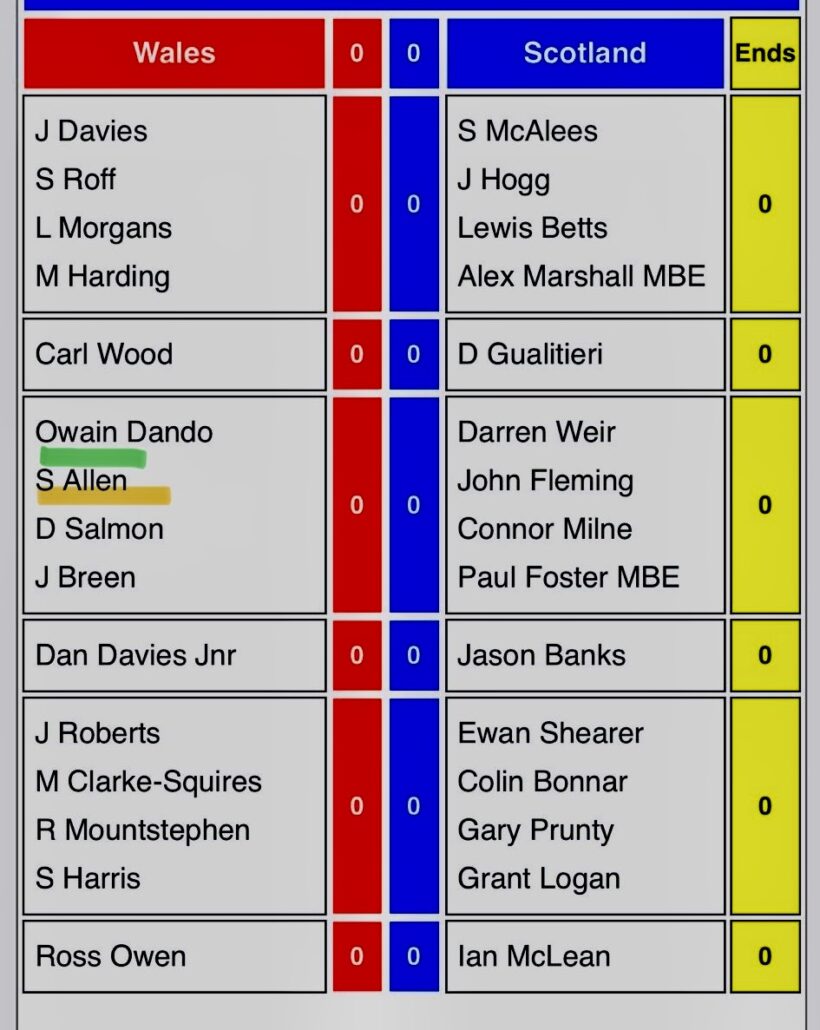
Resolven Bowls Club Members and all the bowlers at Resolven are very proud of Stephen being awarded his first Outdoor International cap.
Congratulations to Stephen from RDN on his achievement.
~ ~ ~
Note: Representing Pontardawe Indoor Bowls Club Stephen became a Welsh Indoor Bowl’s International in 2017 as did Simon Ace, Resolven Bowls Clubs long serving General Secretary. RBC have the Ace name continuing with Simon’s Son Regan playing Junior International bowls.
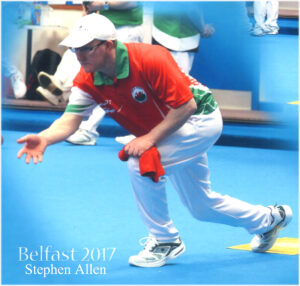
~ ~
The playing surface and condition of the Resolven bowling green has been the envy of many South Wales clubs due to work carried out by volunteers with the cooperation of the Resolven Community Council.
RBC continues to be blessed with very good bowlers and in previous years Andrew Hopkins, RBC Chair has been an Indoor and Outdoor Bowls International player with Simon Williams and Richard Ace being involved also.
Many of the International bowlers who were at Llandrindod Wells representing Wales will be visiting Resolven Bowling Green on the 3rd of August to participate in a Tournament to celebrate the 93rd Birthday of Resolven Bowls Club.
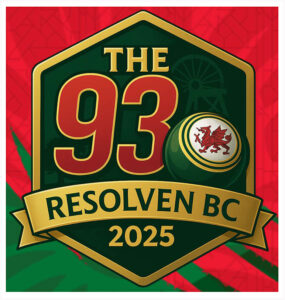

~ ~ ~ ~
Part 3
1955 – 1959
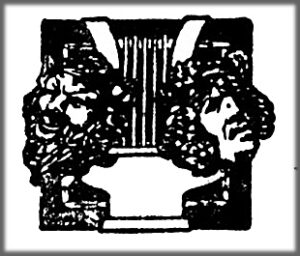
The time before the start of 1955 proved a sad and difficult time for R&DAOS when they lost two valuable members of the same Family, Blodwen (Blod) Davies a leading soloist and a very popular lady in the community and her brother W. Evans Davies, Committee member and Wardrobe Master, both who were very active and had been faithful founder members of the Society since 1926.
As reported previously in our second R&DAOS publication, practices for cast and chorus in 1954 were well advanced and although Mr Glyn Davies recovered quickly after being hospitalised, the production of ‘Merrie England’ had to be postponed until May 1955.
For the 1955 performance another Producer had to be found so Joseph ap Morgan, from Gwaun-Cae-Gurwen agreed to produce this new show for the Society.
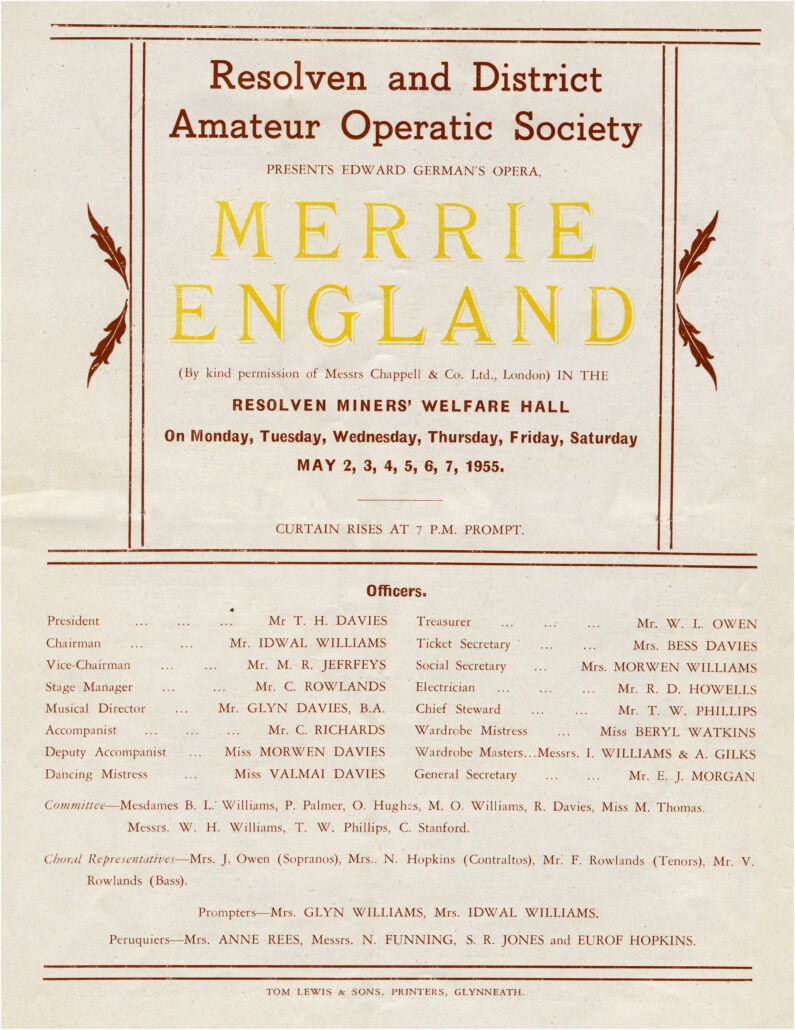
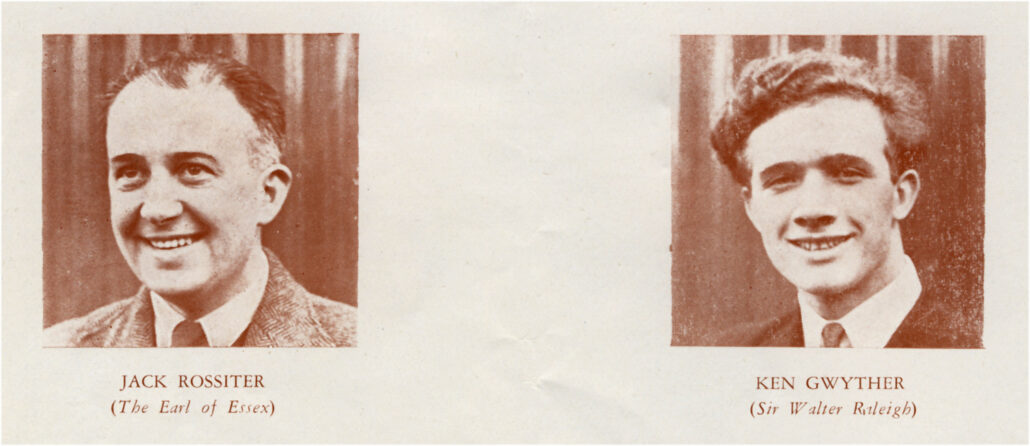
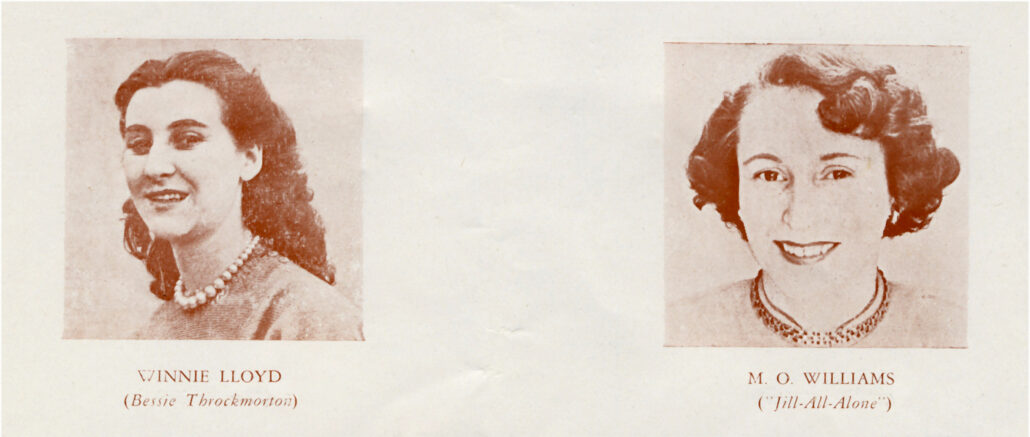
…………………………………………………….
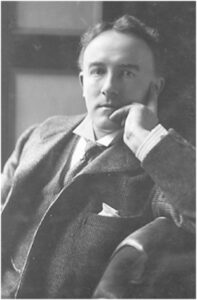
Merrie England, is a patriotic story of Love and Rivalry, and was first performed in London in 1902. The story is set during the reign of Elizabeth I and is an English Light Comic Opera by Edward German. An English composer of Welsh descent best remembered as a successor to Mr Arthur Sullivan in the field of Comic Opera, with Merrie England being one of his most famous, and still performed by Amateur Societies. He was also a prolific writer of Symphonies and Orchestral suites of which his Welsh Rhapsody is best known. Interestingly, his first name was German which was an Anglicised form of the Welsh name Garmon. (A Welsh word for ‘hermit’). At the age of 18 he entered the Royal Academy of Music where he changed his name to Edward German. He never Married and died in 1936.
………………………………………………………

The show ‘Merrie England’ was a big challenge for the Society as not only was it new to the Society it presented quite a few problems due to there being seventeen main characters, besides a large chorus, eight dancers and two handmaidens.
Although the stage size was adequate for the number of artistes, the back stage facilities were extremely limited with only two dressing rooms, (the size of a normal ‘front room’ in a village house) – one for men and one for women. There was a small toilet in the corner of each room.
The perruquiers (make-up artistes) also worked their magic to create stage characters in the same small rooms, which must have been a difficult and uncomfortable job in that environment. Make-up was required and necessary because of the powerful lighting used at that time.
The work that goes on behind the scenes to produce and prepare any show is sometimes overlooked and it is interesting to note that in the Minutes of a General Meeting in 1955 it is written that-.
“We must not forget the ‘Back Room boys’ under the able management of Mr C Rowlands, without which no opera could be performed unless we have such personnel. Our congratulations we readily extend to Mr Rowlands and his assistants.”
“Also Excellent work has again been carried out by our Social Committee, and Mrs Idwal Williams, the Social Secretary, and her Committee are to be congratulated too.”
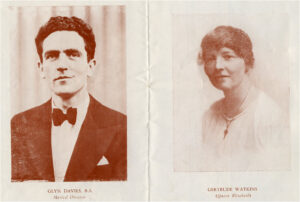

One of the highlights of the show was the colourful dance routines. There were eight dancers with Miss Valmai Davies leading the dancers. She was well respected and the Society were fortunate to have the services of such an accomplished young dancing teacher. Her contribution to the show was clearly part of its overall success as it was a show that was very different from a Gilbert & Sullivan Operetta and the Composer Edward German was lesser known but the production was reported as beingl well received and enjoyed by the audiences.
.
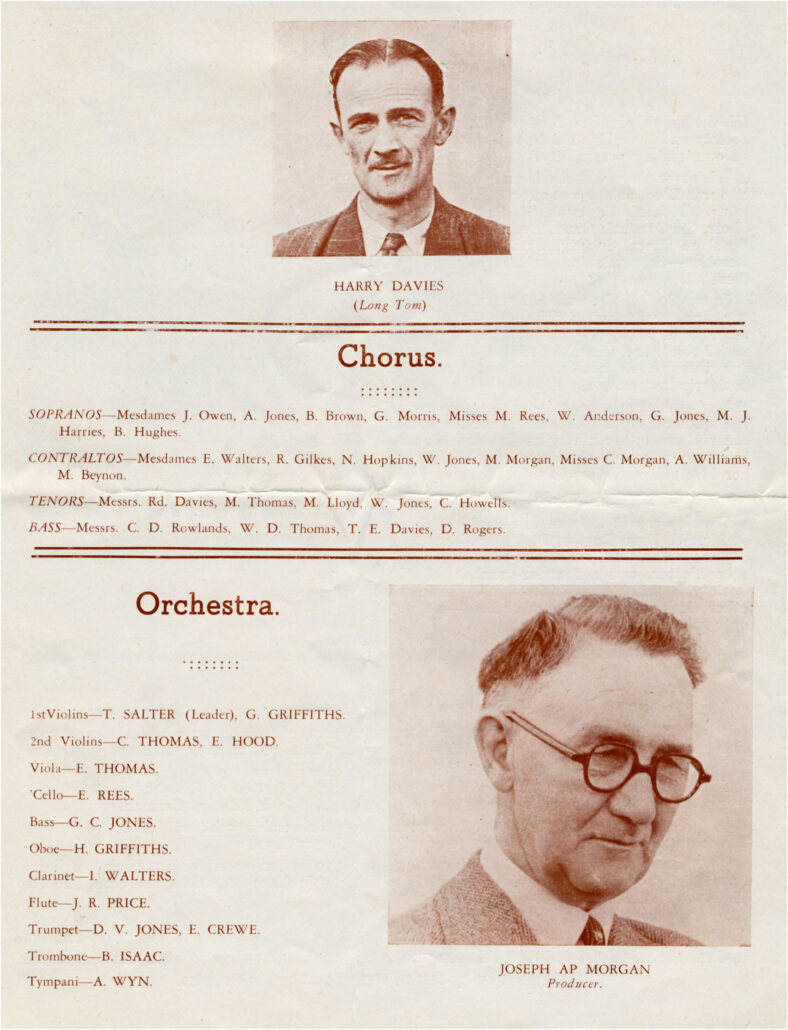
~
In 1956 a return was made to the Gilbert and Sullivan shows for the next production, but this time two operettas were chosen, ‘Trial by Jury’ and ‘HMS Pinafore’. These two shows are often performed together as they are shorter in length from other operettas. Mr Richard Jones, Penrhiwceiber returned to the Society and was able once again to produce the show. The full ‘Opera Week’ returned with the performance dates of April 30th – 5th May 1956.
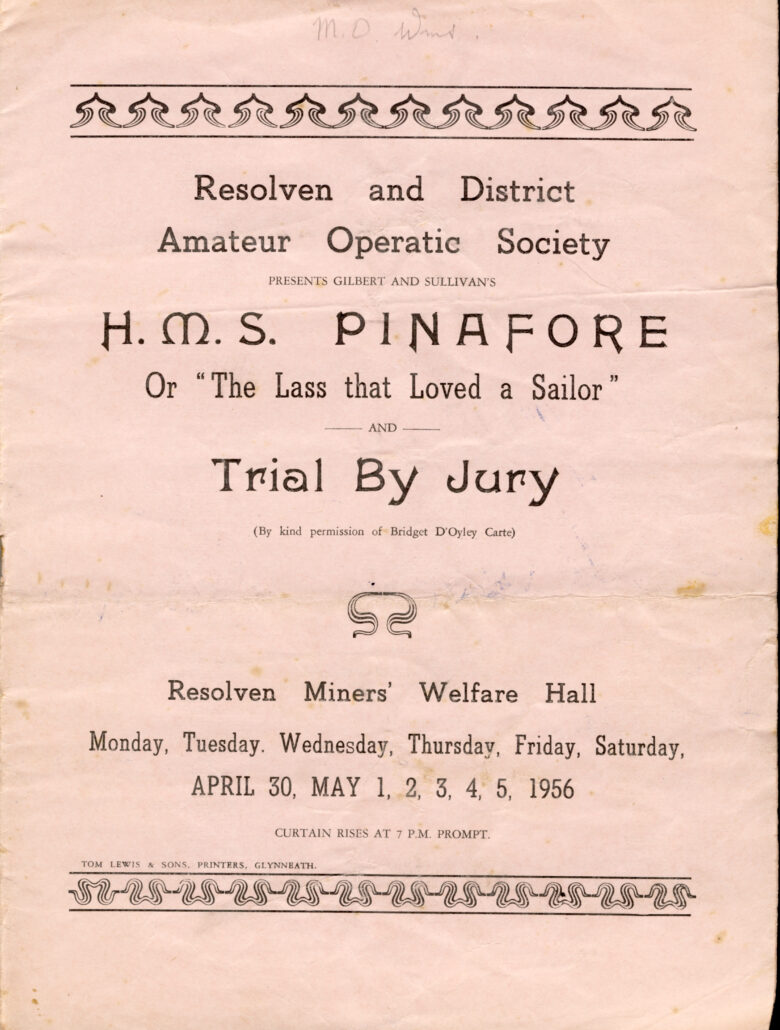
A feature of the production of ‘Trial by Jury’ was that the chorus improvised with their own costumes for the scene of the general public in the trial. This proved effective on stage and meant, of course, that it was also an exercise in cost saving.
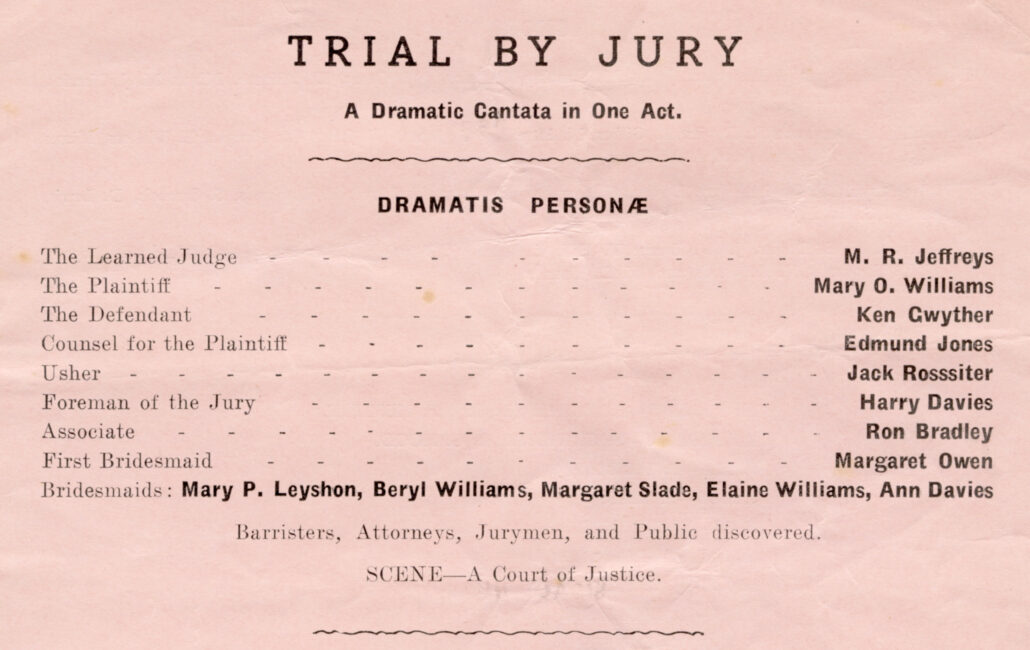
For the production of HMS Pinafore, Mr Idris Morgan who played Capt. Corcoron and Miss Megan Hopkins who played Josephine returned to the Society after some years’ absence
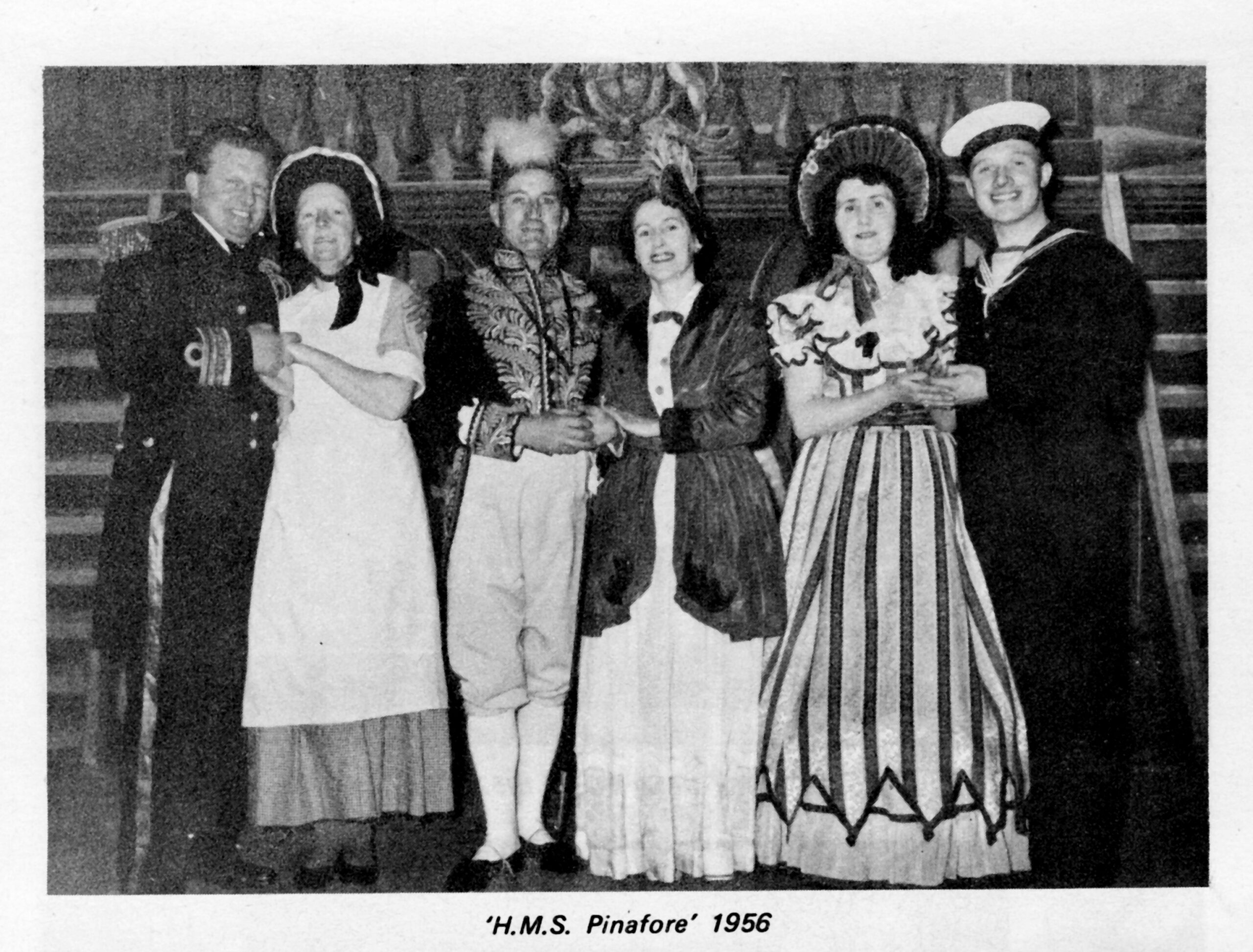
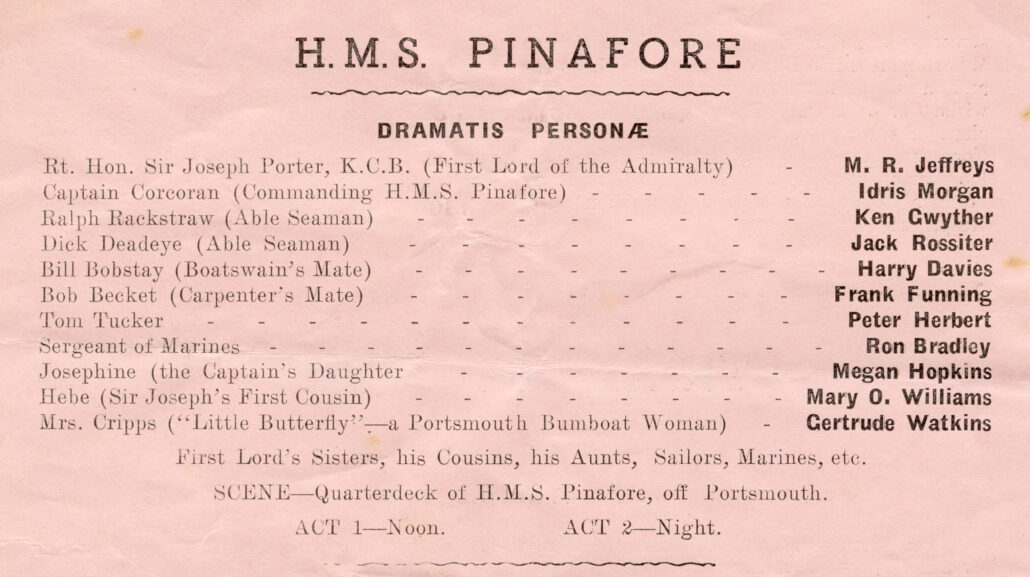
~
A short time after ‘Opera Week’ and during the summer months, a small party of 20 in number, practiced in Jerusalem Vestry and Chapel for the Madrigal Competition in the Aberdare National Eisteddfod which was being held in the first week of August 1956. They were called ‘Parti Ynysfach’ and under the direction of Mr Glyn Davies, they narrowly missed first place in the competition.

Also in 1956, Mr Idwal Williams was made Life Member for his services to the Society. He had served on the Committee from 1950 onwards and had been Wardrobe Master from 1951 to 1956 and was Chairman in 1956. Although he left the village to live in Llandeilo, he continued to take an interest in the Society and returned every year for the annual performances of the Society.
~
The Autumn saw a return to practices for the next operatic venture in 1957, the choice was ‘The Rebel Maid’ a popular light operetta by Montague F Phillips who was a British Composer.
…………………………………………………………..
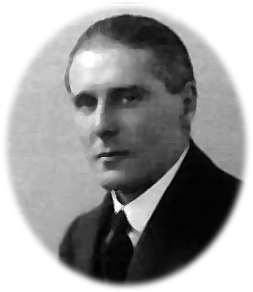
The Operetta was first performed in 1921 at the Empire in London. Mr Montague F Phillips was the Conductor for the performances, and his future wife, Clara Butterworth, a soprano of note, sang the lead role of the rebel maid. Mr Phillips was born in Tottenham in 1885 and died at the age of 83 in 1969. His wife outlived him by many years and died aged 109 in 1997.
………………………………………………………..
The producer again was Mr Richard Jones, with Mr M R Jeffreys as Deputy Producer. Unfortunately, a short time before the show Mr C Rowlands fell ill, so was unable to be Stage Manager. It was the first time he had been absent since the first show in 1927 and he was greatly missed but luckily Mr Eurof Hopkins took over the position of Stage Manager and carried out the work effectively and efficiently.
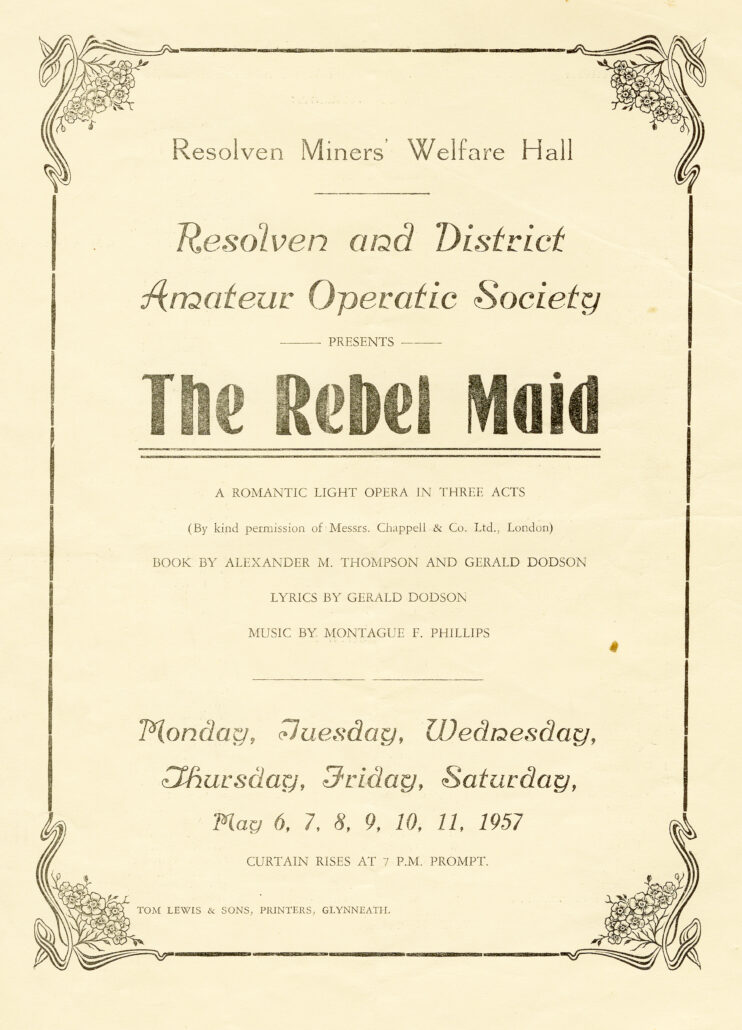
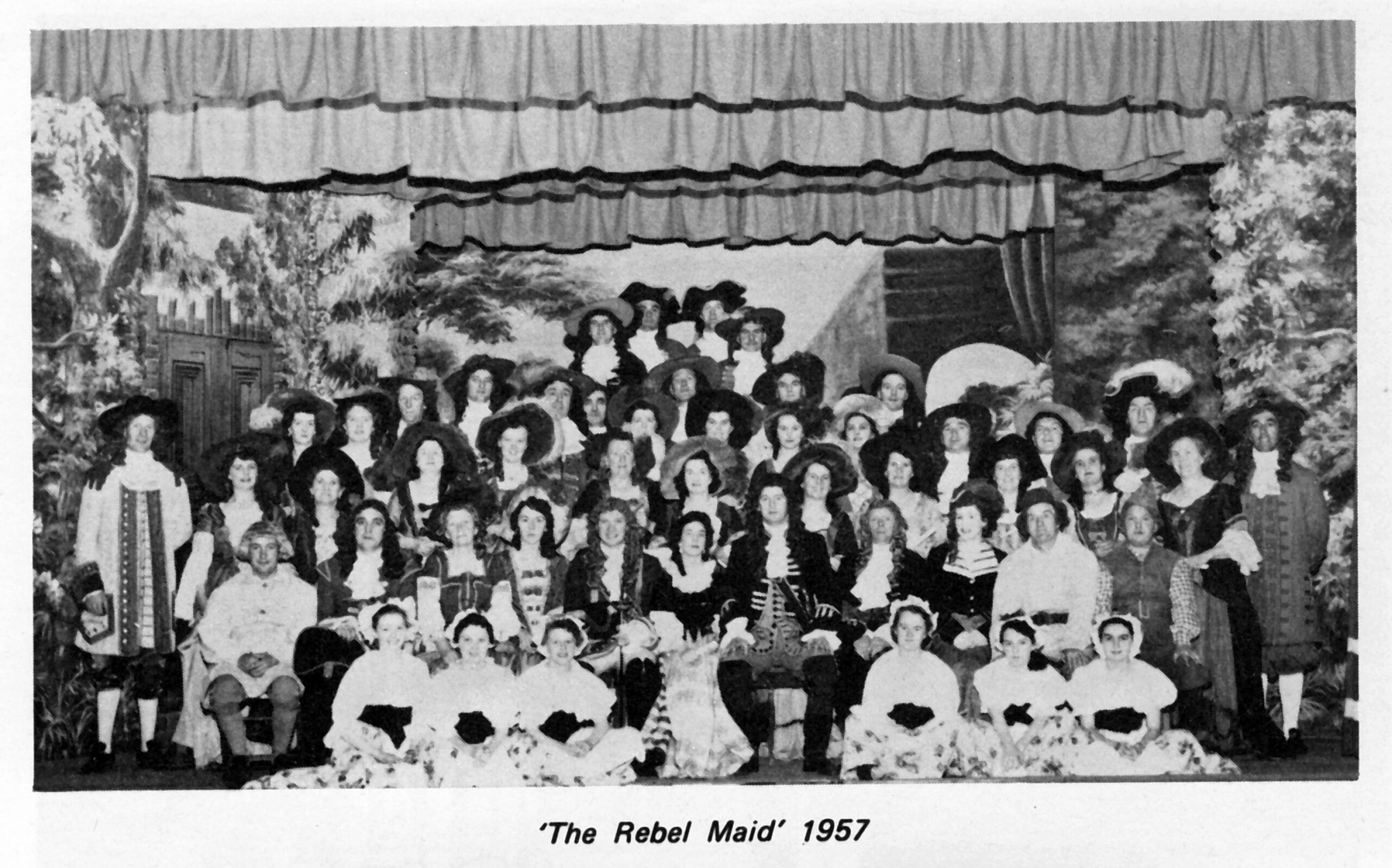
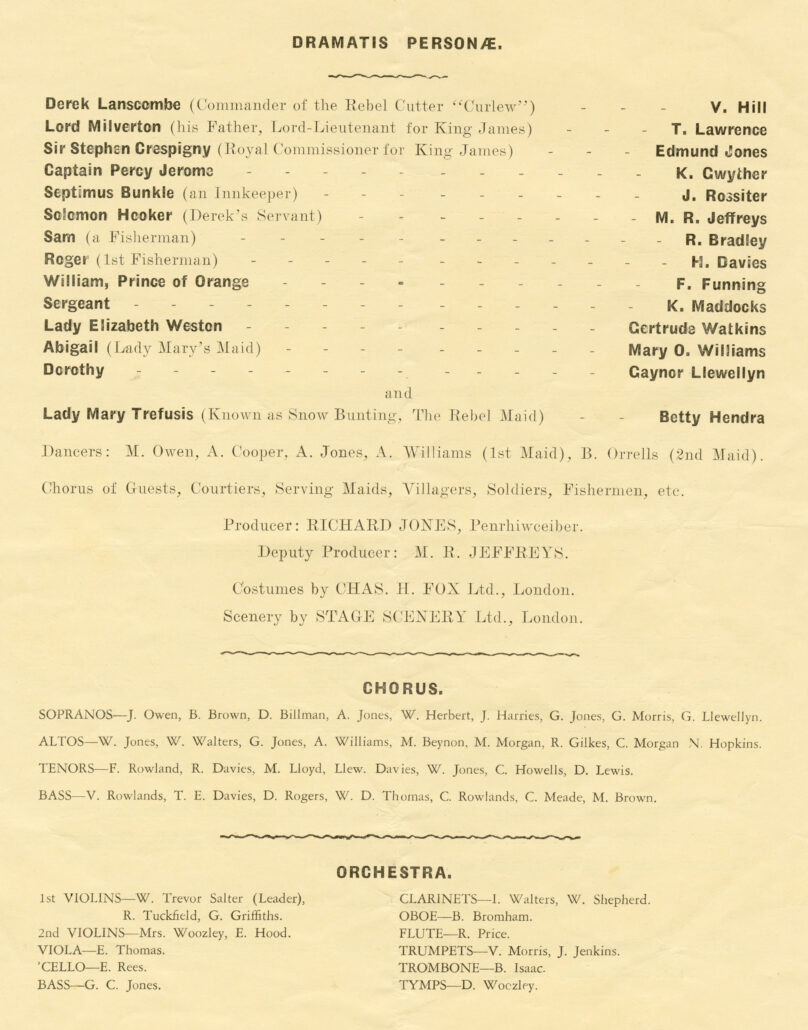
It is recorded that the show of The Rebel Maid attracted a lot of interest from other visiting Societies and the wider community due to the show being so colourful and different and not so well known.
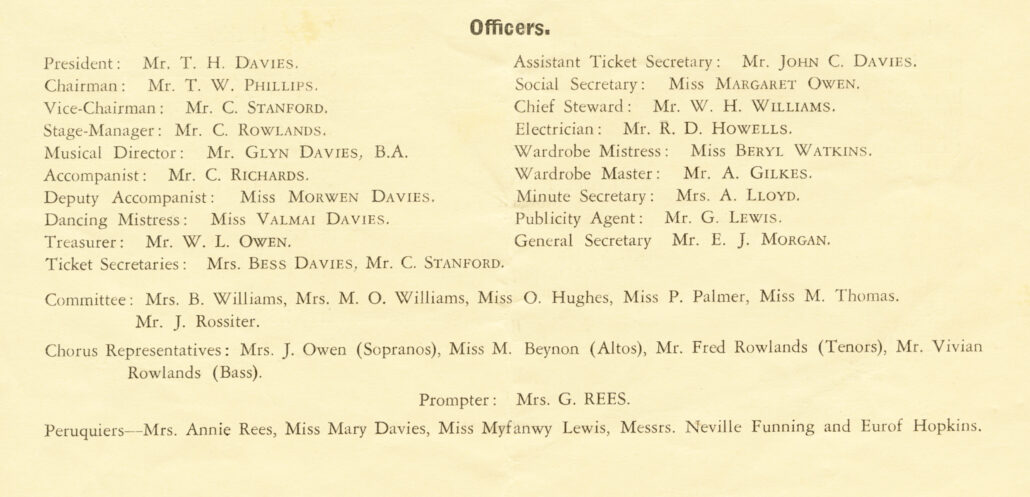

The following information shown on the programme was unusual and maybe of interest.
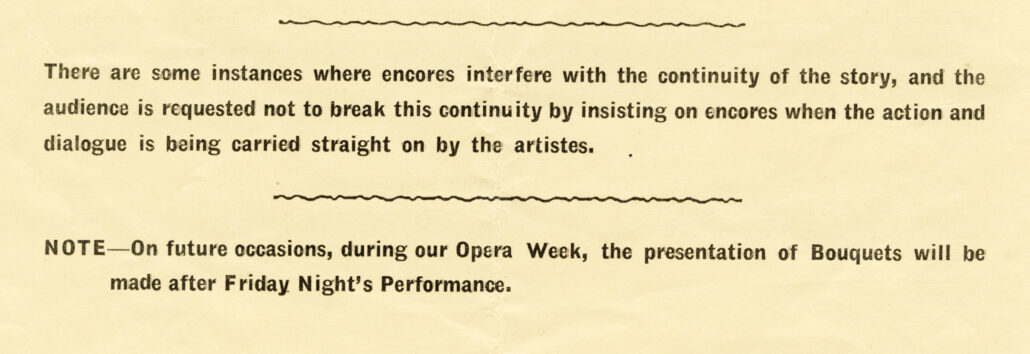
~
After the show, the Musical Director, Mr Glyn Davies suggested that the Society put on a concert in the Autumn, which would keep the members occupied while developing their voices and this would be for the whole year, and not just a few months. The idea was taken up enthusiastically by the Chorus, and for the Concert, a number of music – lovers from outside the Society as well as former Society members joined the choir. Normally for such a concert soloists would be brought in but for this performance three of the soloists were members of the Society, namely Mrs Winnie Lloyd, Soprano, Mr David Williams, Tenor and Mr John (Jack) Rossiter, Bass with Miss Gwyneth Price of Neath, Contralto.
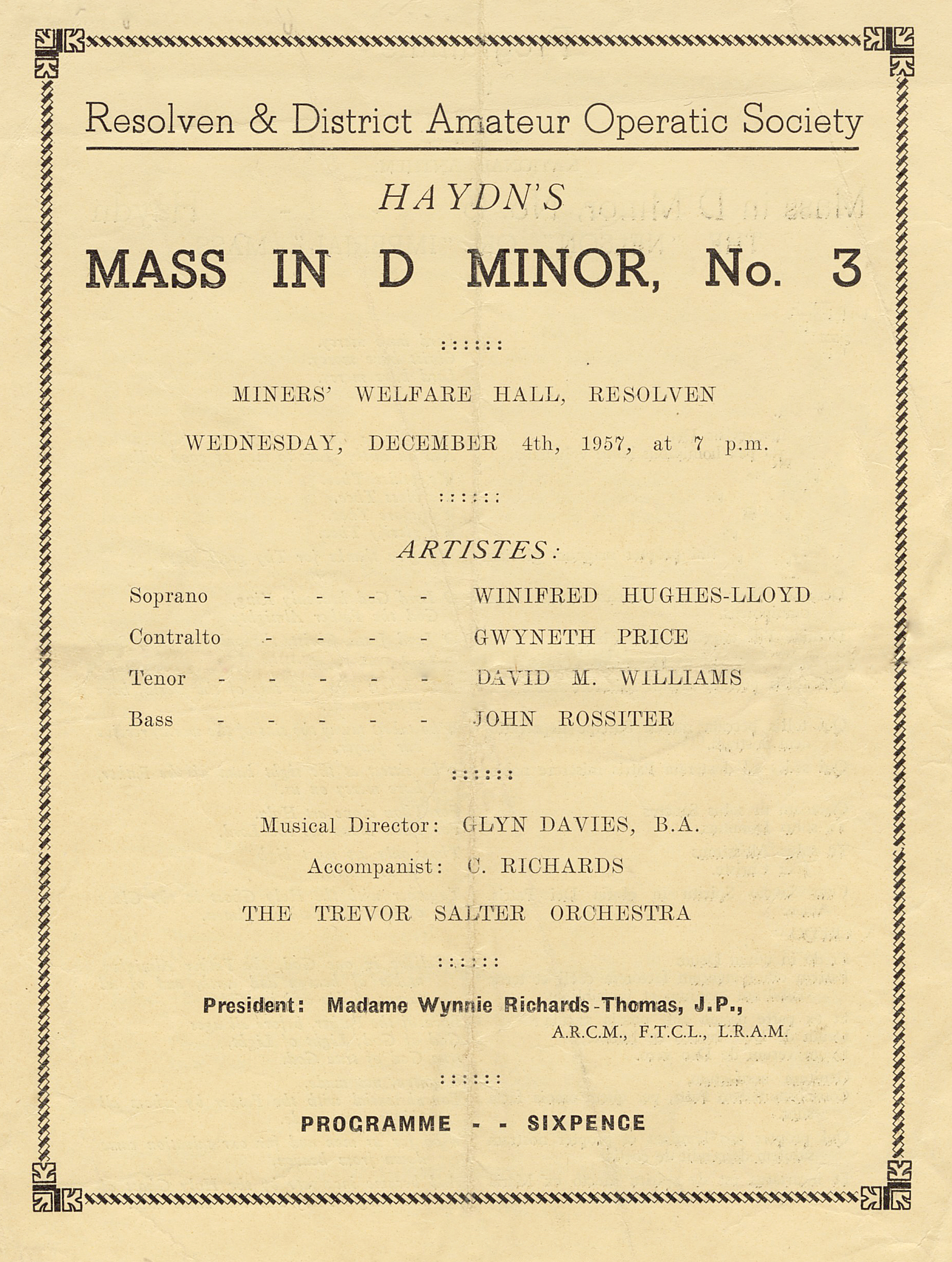
.
.
The concert was a huge success for the Society and community and was widely reported as such in the press. Therefore, requests were received for further performances at different locations. The first being St Anne’s Church Tonna with Mrs Eileen Gethin-Jones accompanying on the organ. The next performance was the following year in the Eisteddfod Marquee, Glynneath on Sunday evening July 6th 1958. The accompanist then was Mrs Olive Williams. Unfortunately, for varying reasons, there were only seven sopranos nevertheless, they gave a creditable performance.
.
~
For 1958 the Comedy Opera ‘Dorothy’ was chosen which was the first Opera to be Produced by Resolven’s own Merfyn Jeffreys. This was no mean achievement as he also took one of the leading roles in the Opera. The dates of the show were the 19-24 May 1958. This was a show that had a lot of movement and dancing routines plus a ballet sequence ably managed under the direction of the Dancing Mistress, Miss Valmai Davies
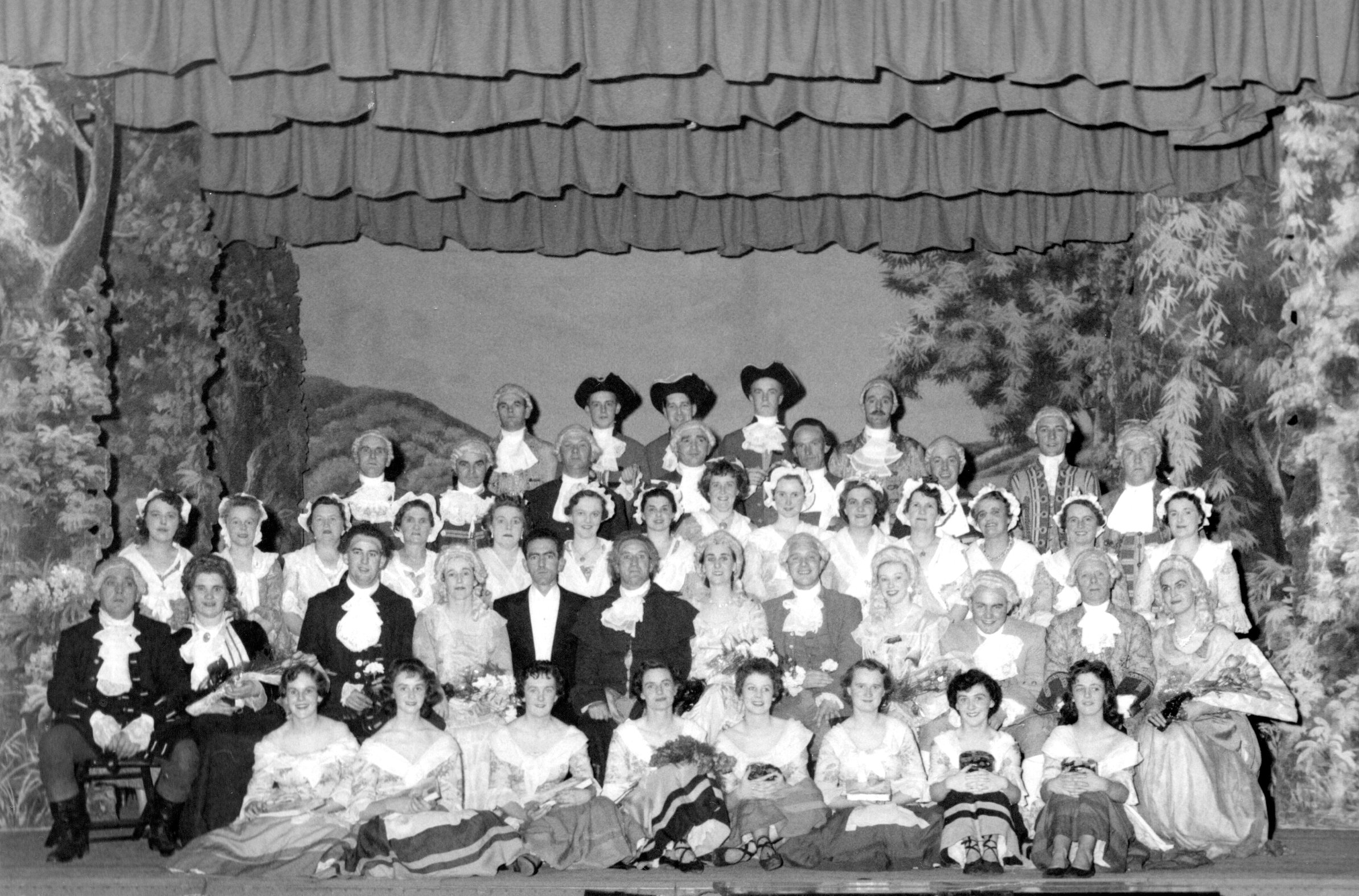

………………………………………………………….
‘Dorothy’ is a comic operetta in 3 Acts with music by Alfred Cellier and libretto by B C Stephenson. The Story is one of romance and mistaken identities with topical humour. It was first performed at the Gaiety Theatre in London in 1886. It had an initial run of 931 performances breaking the record for the longest running Musical in theatre production history and holding the record until the 1900s.
‘Dorothy’ toured and enjoyed numerous revivals in Britain until 1908 with at least five separate and simultaneous companies performing not only in the UK but also in America and Australia.
…………………………………………………………
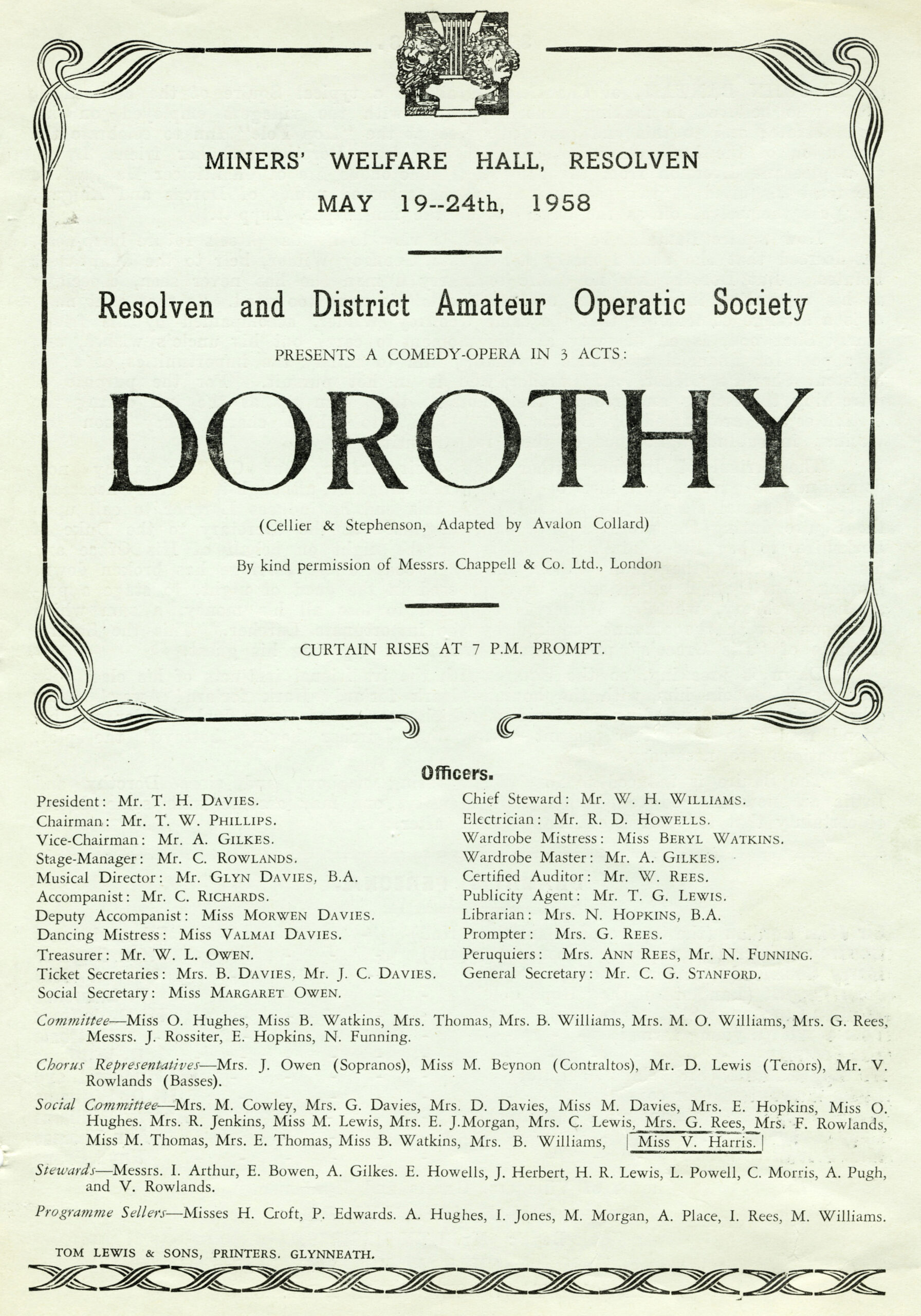
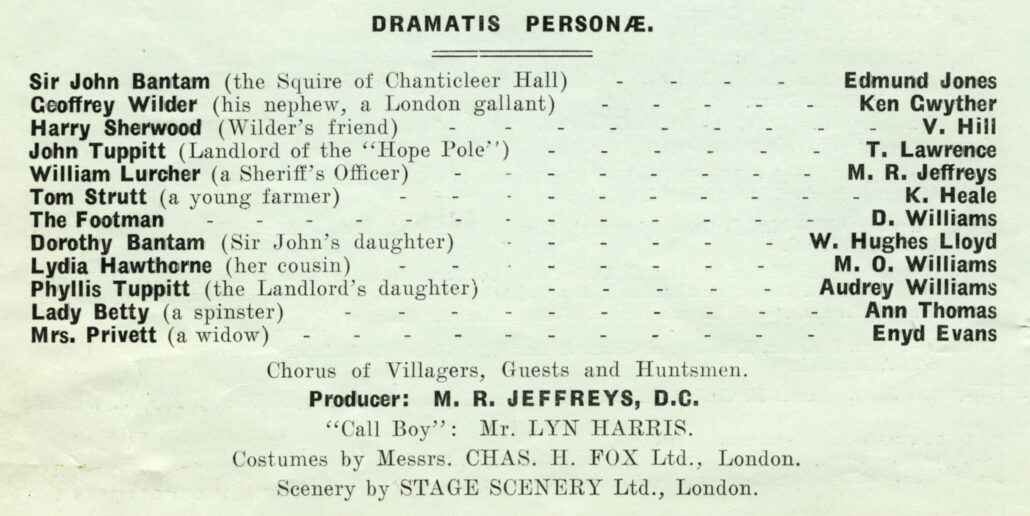
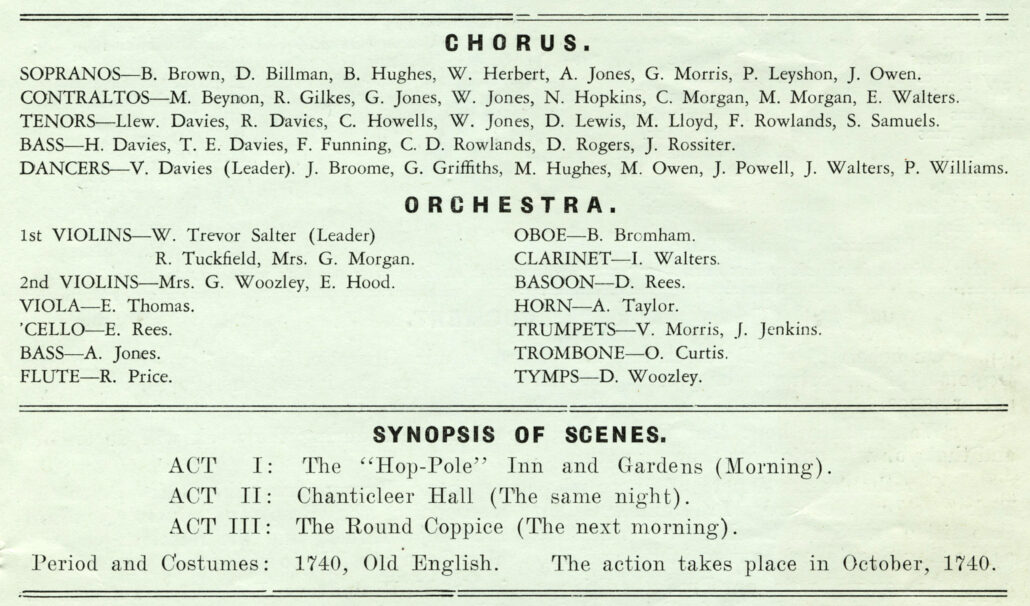
~

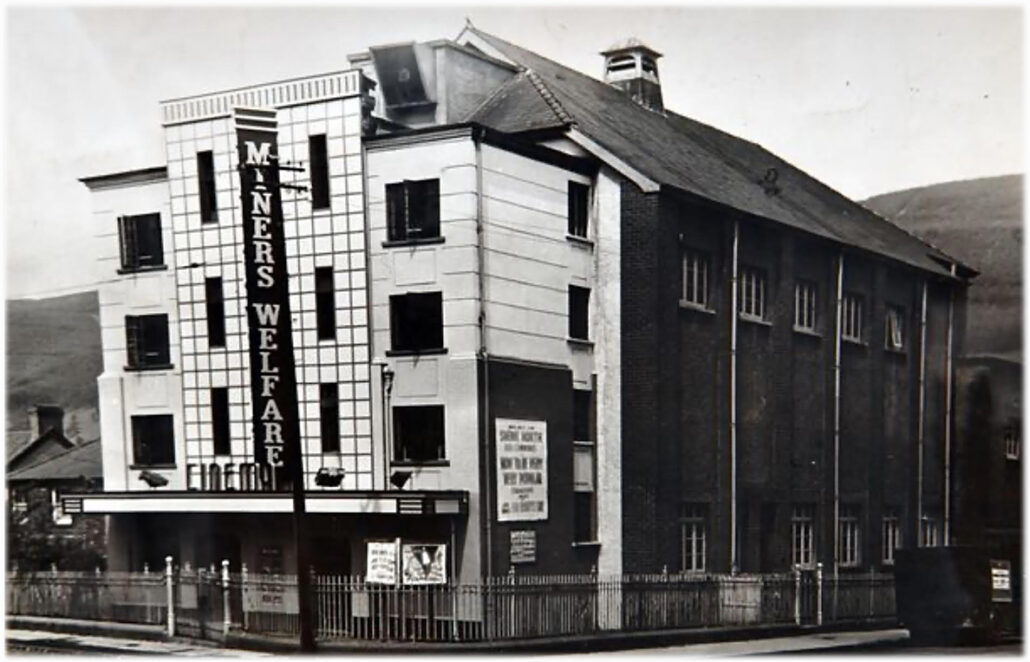
This was the beginning of a period of great activity in the Society’s history. Following the week of the Opera, the Choir embarked on another concert, Rossini’s ‘Stabat Mater’ which was rehearsed and performed at the Welfare Hall Resolven on Wednesday, December 17th, 1958. The four soloists were members of the Society. Again it was very well received by the community and press.
.
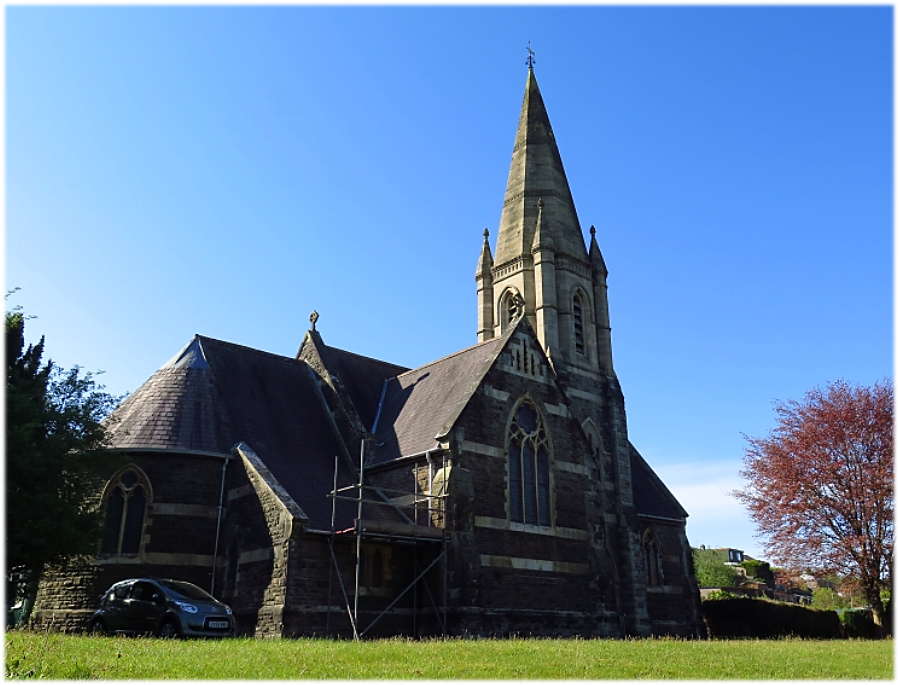
.
Another request was made from Tonna for a performance in St Anne’s Church with Mrs Eileen Gethin-Jones accompanying again.
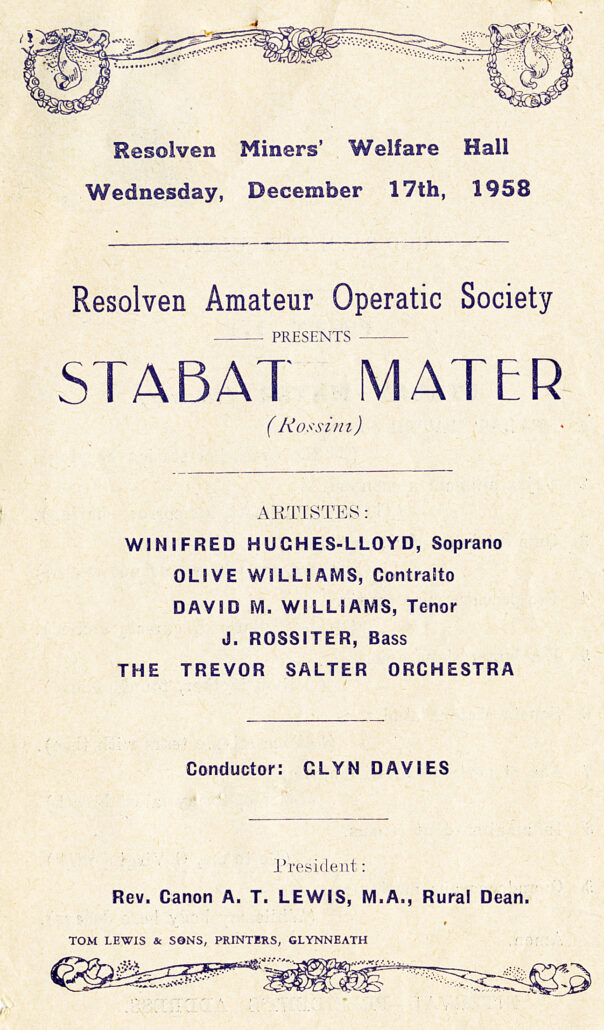
~
In 1959 there were several important decisions made. It was first decided that the 1959 Opera performance dates would be changed to November when during that year a French Comic Opera, ‘Mirette’ by Andre Messager would be staged. This presented something of a challenge for the Producer, Mr Mervyn Jeffreys as there was no producer’s marked score and libretto and no professional performance to follow or adapt. That must have been quite an obstacle to overcome.
Mr Ernest H Davies became Secretary while Mrs Jean Hill undertook the work of the Social Secretary.
The second decision made was that the venue for rehearsals would change. Permission had been given by the Glamorgan Education Committee for the Society to use the Resolven School Hall. The Society was fortunate to continue to rehearse there for many years.
Due to rising costs the Society reverted to four performances for ‘Mirette’.
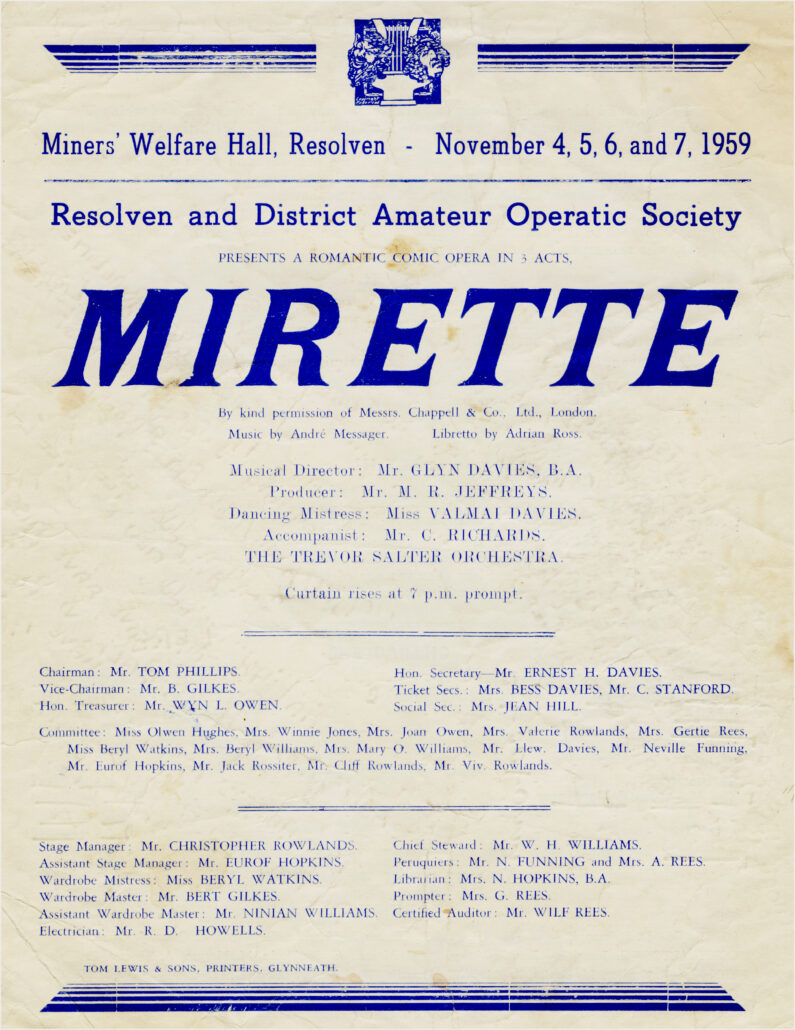
…………………………………………………………..
Mr André Messager was a French composer and organist. His operettas achieved popularity in France and the UK. He was born in Paris in 1853 and died in 1929-between 1890 and 1926 he produced 14 operettas. He wrote in a light elegant style that was characteristically Parisien with romantic plots and elaborate dancing routines. Mr André Messager along with Lehar and Strauss it is said contributed to the evolution of light operettas filled with gaiety and charm, into what is now called musical comedy.
………………………………………………………..…

Before the first night one of the main characters taking part Mrs Betty Davies developed tonsillitis and was unable to take part. However one of the chorus Mrs Nesta Hopkins stepped in with no rehearsal for the first and second night. Thereafter, Mrs Betty Davies recovered enough to be able to play on Friday and Saturday.
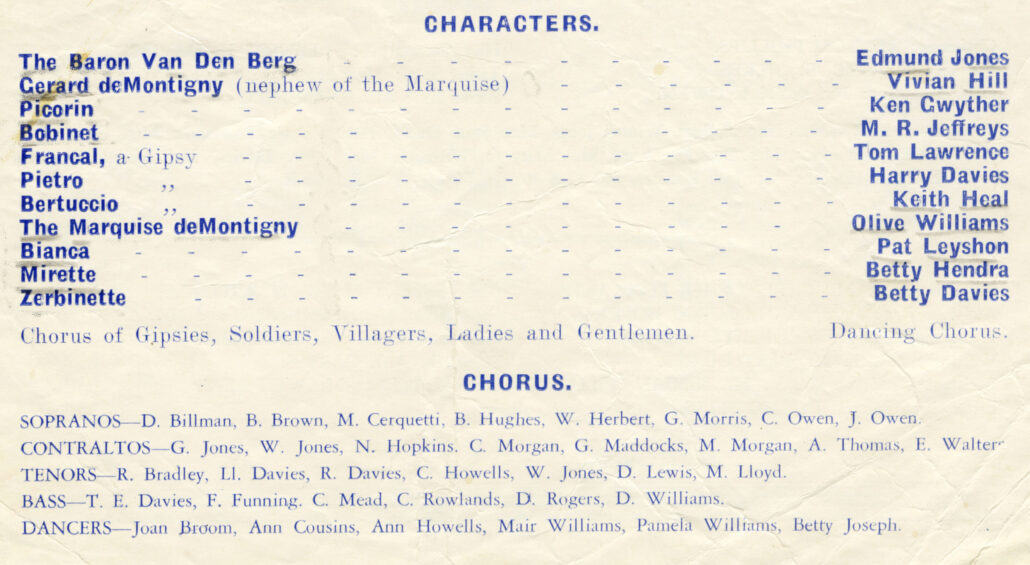
The Finance and Administration Section are a vital part of any Organisation. Even with many unpaid volunteers, the cost of staging a production in Resolven in the 1950’s was approximately £600 equivalent today, to a staggering £16,000. It must have been an extremely difficult task to make a profit to continue or to break even each year. Resolven is a small village and it is admirable and amazing that Resolven & District Amateur Operatic Society were able to carry on performing for so many years.
~
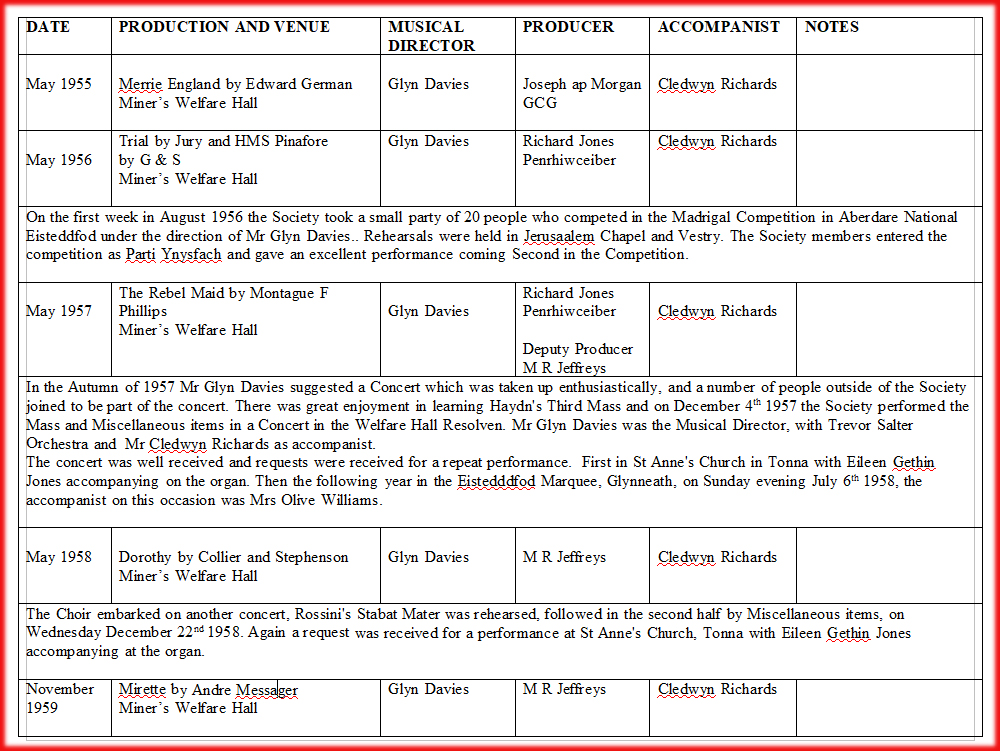
It’s true to say that the Society at this time was enjoying a period of positivity and success, and with a new decade approaching, the Society looked secure for the future.
~ ~
Some information taken from ‘Resolven Operatic Society’ – ‘A History from 1925 ~ 1976’ by Nesta Hopkins with additional information from Owen & Christine Davies. Compiled by Lorna & Hugh Lewis.
~ ~ ~ ~
/to be continued
For essential resurfacing works to the B4434 at New Road, Tonna (NE of Tonna Hospital and towards Resolven) will be closed on Thursday 29 May 2025, between 19.00 and 06.00 for approximately 2 nights, avoiding unforeseen plant issues and weather permitting.
In the event of an emergency, access will be granted for emergency vehicles only.
All refuse and recycling collections will continue as usual.
If you have any specific requirements or any queries, please contact Connor McCalmon on 07767896957.
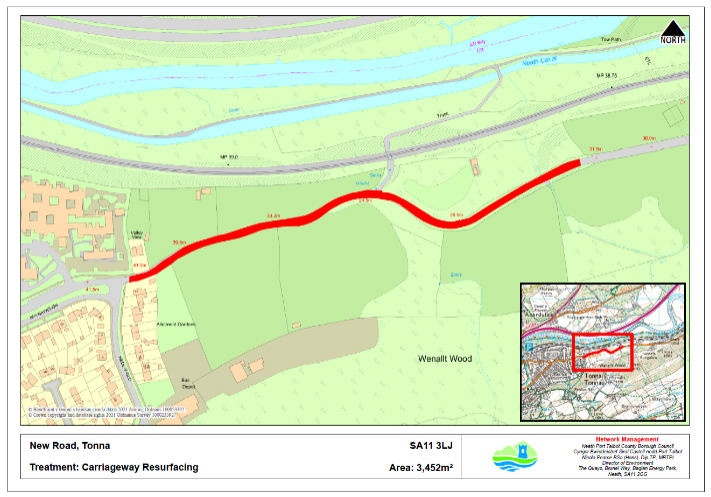
~ ~ ~ ~

~ ~ ~ ~
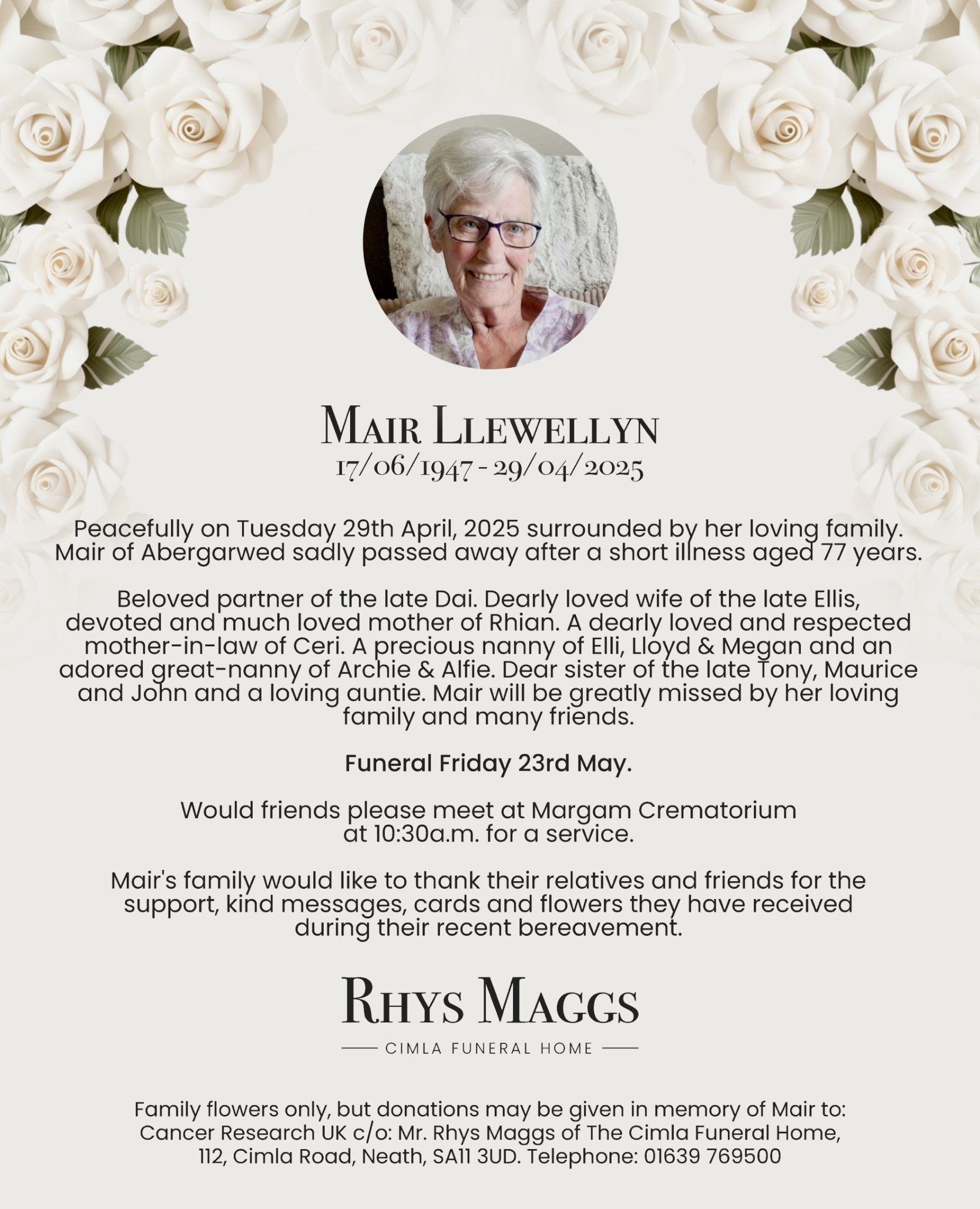
~ ~ ~ ~
